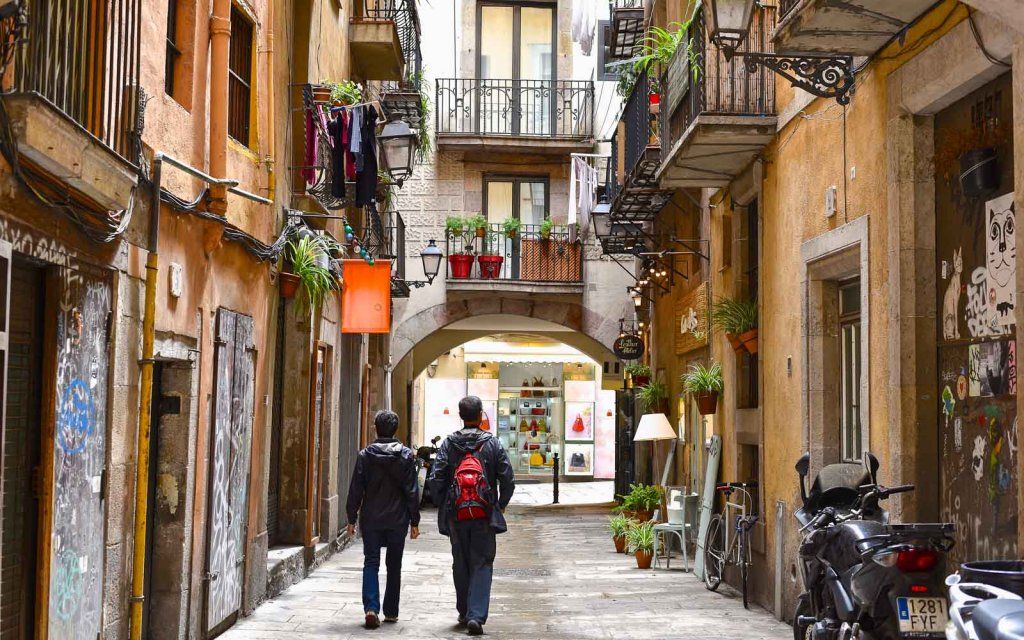The 6 best neighborhoods in Barcelona
It may be Spain’s second-largest city, but part of the enduring appeal of Barcelona is the ease with which visitors can wander between neighborhoods from its string of golden-sands beaches to its buzzing shopping districts via the likes of Las Ramblas and Antoni Gaudí Modernist masterpieces.
From cool, vegan restaurants and Japanese patisseries to honey-combed cobblestones and century-old shops, each district gives visitors something different to discover. Here’s our guide to the six top neighborhoods to stay in and explore in Barcelona.
See some of Gaudí’s designs, including Park Güell, in the Barcelona neighborhood of Gràcia © Lukasz Szwaj / Shutterstock
1. Gràcia
Best neighborhood for trendsetters
Once an independent municipality from Barcelona itself, Gràcia is now the neighborhood with the strongest personality in the city. Considered the city’s coolest district, Gràcia is filled with local designers’ workshops, vegan restaurants and even Japanese patisseries. As well as all the organic food stores and yoga studios, traditional Catalan culture still thrives, as evidenced in the language, local folklore and popular events that take place in the neighborhood.
Markets still abound in Gràcia, and the streets are filled with several squares that are meeting points for people of all ages who gather over drinks each evening starting around 7pm. Packed with all types of restaurants, from local tapas joints to Michelin-star restaurants, Gràcia is also a great neighborhood for strolling, bar-hopping and soaking in the local atmosphere. You can also find architectural gems designed by Modernist architect Antoni Gaudí, such as Casa Vicens and Park Güell. Being well-connected with downtown, Gràcia is a strategic location for those wanting to be close to the city center but farther from the hustle and bustle.
Barcelona’s best beaches are located in the Barceloneta neighborhood © Arsenie Krasnevsky/Shutterstock
2. Barceloneta
Best neighborhood for beaches
A year-round vacation spot, Barceloneta (‘Little Barcelona’) is the preferred neighborhood for tourists thanks to its glorious necklace of beaches.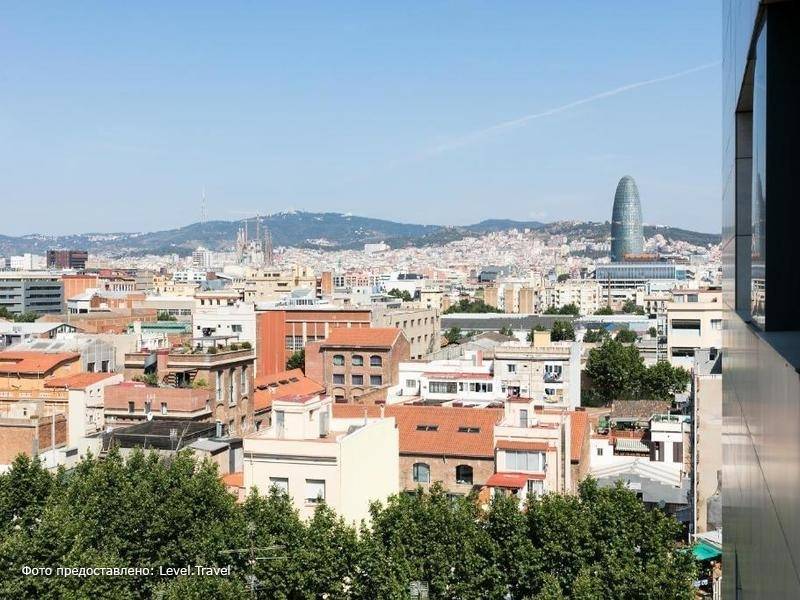
While the area’s buildings lack the patrician facades that characterize other parts of Barcelona, they have kept their own unique character and today house a wide array of tapas bars and nightclubs. Though most stay in Barceloneta for late-night parties or beach action, Barceloneta has plenty of spots for families to enjoy. Stroll around Port Vell (Old Harbor) and along the animated promenade. Kids will also like L’Aquàrium and the Museu d’Història de Catalunya.
Make the most out of every adventure with help from our weekly newsletter delivered to your inbox.
The Barcelona neighborhood of El Born has an endless supply of street cafes and bars © Marco Rubino / Shutterstock
3.
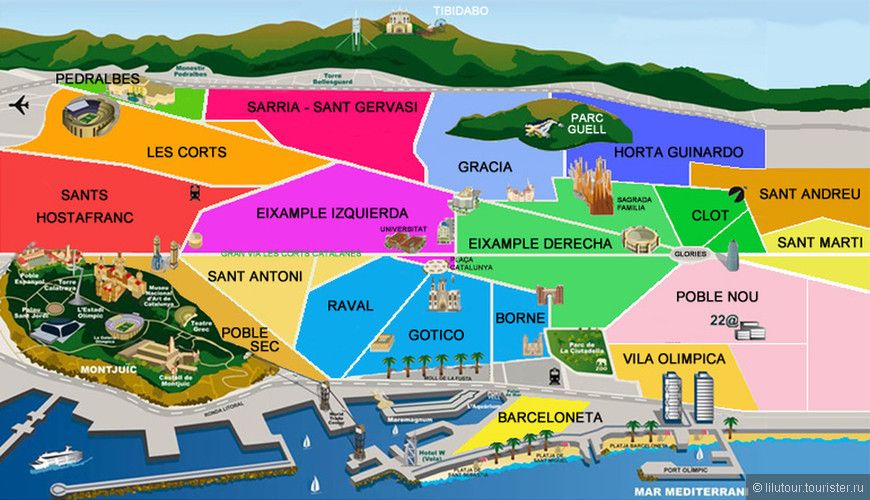
Best neighborhood for sights
El Born competes with Gràcia for the title of Barcelona’s trendiest neighborhood, but instead of vegan restaurants and urban gardens, El Born is home to concept stores, art studios and a distinctly international vibe. Formerly a craftsmen’s district, El Born is one of the oldest neighborhoods in Barcelona. There’s lots to do for free here. Look for century-old shops such as Casa Perris (a grocery store that sells in bulk) and some of the most important landmarks in the city, including Basílica de Santa Maria del Mar, a Gothic church from the 14th century, and Palau de la Música, a music hall and one of the best examples of Modernist architecture.
If your budget allows, El Born has a wide range of fine-dining restaurants, mostly offering Mediterranean and Spanish cuisine. For those on a budget, you can also find plenty of international fast-food eateries and an endless supply of bars. El Born enjoys a prime location between Barceloneta and the city center and is within walking distance of most city landmarks, making it one of the most popular neighborhoods for accommodations.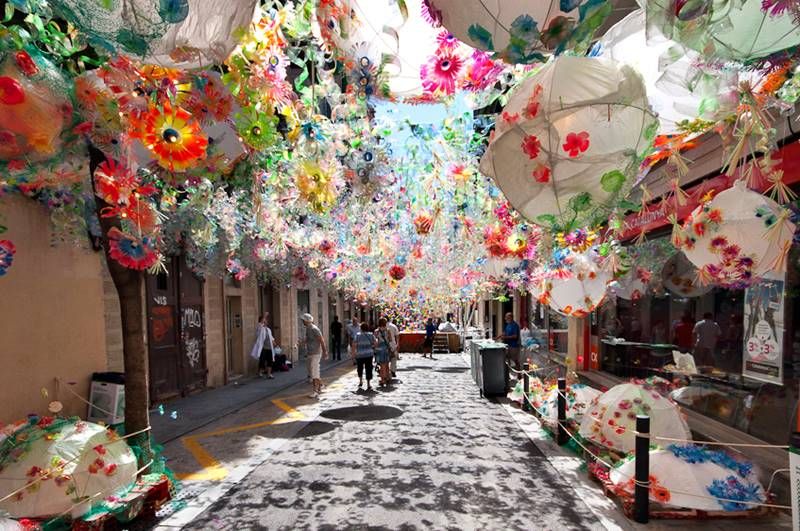
Want some help? Let Elsewhere plan your next trip.
The famous La Sagrada Família is a highlight of Barcelona’s L’Eixample © martin-dm / Getty Images
4. L’Eixample
Best neighborhood for Gaudí architecture
L’Eixample, which means the “expansion district” in Catalan, is a neighborhood built between the 19th and 20th centuries that was constructed as Barcelona expanded beyond the Old City. Its strict street grid pattern that’s crossed by wide avenues makes it easy to navigate – and popular for aerial photos. L’Eixample is typically divided into Left Eixample and Right Eixample, which are separated by Passeig de Gràcia, Barcelona’s most exclusive avenue. Here you will find Gaudí-designed buildings such as La Pedrera and Casa Batlló.
Concentrated in Right Eixample are important historic sites, such as Gaudí’s still unfinished masterpiece, La Sagrada Família, and the Modernist Hospital Sant Pau, a Unesco World Heritage site. The neighborhood is well-connected and has the most extensive range of accommodation options in the city.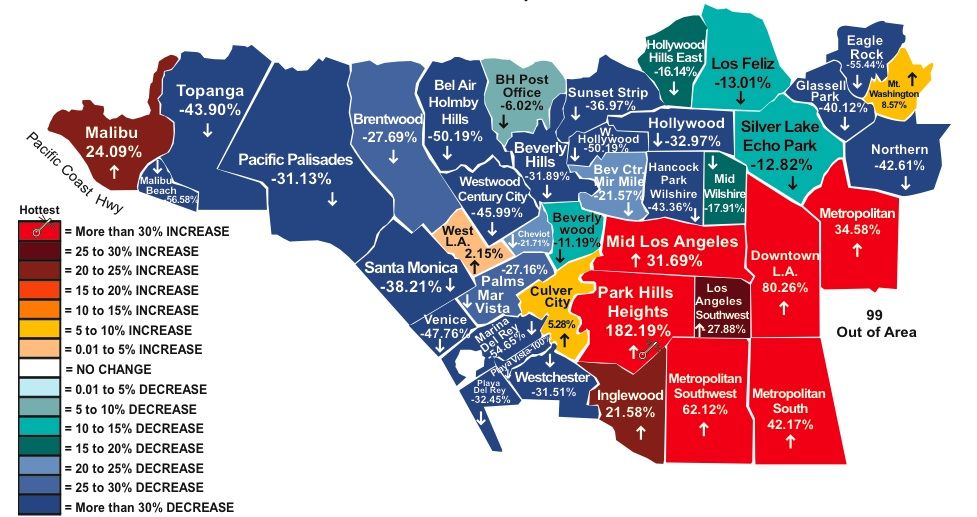
Discover La Sagrada Família, Barcelona
5. El Raval
Best neighborhood for bars
El Raval is the most vibrant of Barcelona’s neighborhoods, and it’s where everything is happening. Part of the Old City and located southwest of La Rambla, this neighborhood is home to the Museum of Contemporary Art of Barcelona, as well as Mercat de la Boqueria, the busiest local market in Barcelona, where stall-holders cook with some of the best quality ingredients in the city.
El Raval is also the most multicultural neighborhood in Barcelona, making it an area of huge contrasts. If you fancy a more local party vibe than in Barceloneta, check out El Raval’s bar-hopping scene. Stop into Bar Marsella, a late-night institution known for being the oldest continuously open bar in the city.
Peek into Barcelona’s past in Barri Gòtic, the city’s Gothic Quarter © David Soanes Photography / Getty Images
6. Barri Gòtic
Best neighborhood for history
The historic center of Barcelona is Barri Gòtic (Gothic Quarter).
Even if you’ve been to Barcelona before, you’re bound to find new-to-you bars, restaurants and historic squares hidden down the narrow alleyways. Rambling the labyrinthine lanes is a delight. Being right in the city center, Barri Gòtic is within walking distance from most tourist attractions. Some parts of the Gothic Quarter are known for late-night parties, so keep this in mind when looking for the right neighborhood to stay in.
13 Best Neighborhoods in Barcelona
Compared to other metropolitan cities around the world, Barcelona may be significantly smaller, but that doesn’t mean to say that the city doesn’t have variation. In fact, Barcelona is the most popular tourist destination in Spain and attracts all sorts of people hoping to take advantage of its mild year-round climate, explore Gaudi’s striking architecture, and sample some foodie delights.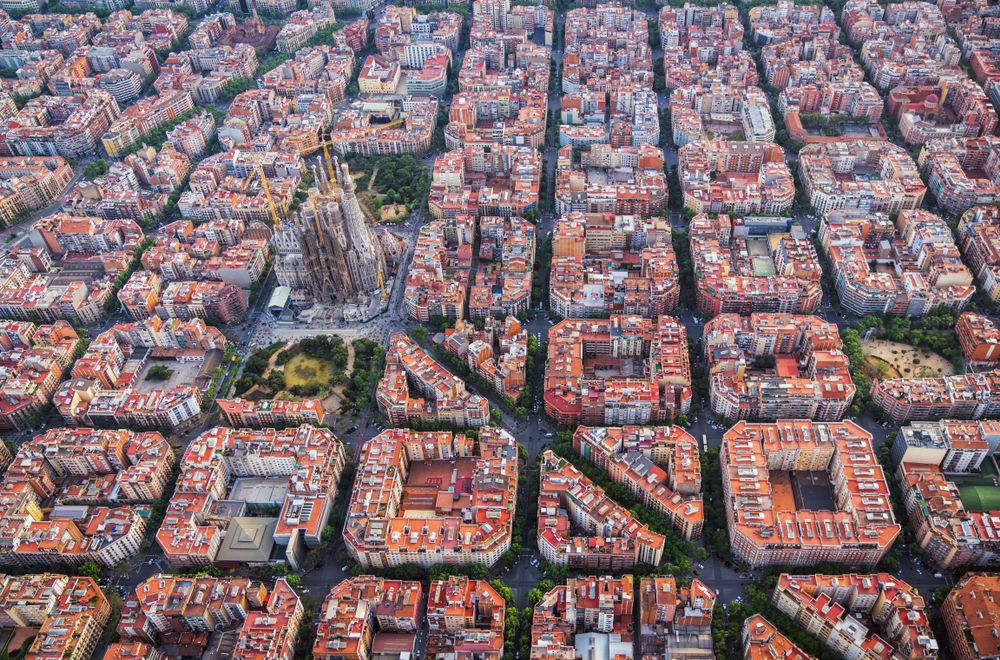
In this guide to the best neighborhoods in Barcelona, we’ve organized our listing into family-friendly areas, neighborhoods for young professionals, and more, so you can find the perfect location for your wants, needs, and budget.
The 13 best Barcelona neighborhoods at a glance:
- El Raval. Trendy neighborhood with affordable housing and a thriving arts scene.
- Sants-Montjuic. One of the greenest districts in the city with a small-town atmosphere.
- Horta Guinardo. A quiet community neighborhood on the outskirts of the city.
- Gracia. A family-friendly neighborhood with lots of green spaces and public transport.
- Les Corts. Upmarket residential area with a huge choice of international schools.
- Sarria – Sant Gervasi. Wealthy neighborhood with spacious homes and top-performing schools.
- Barrio Gotico. Vibrant area home to a wealth of expats and popular with tourists.
- El Born. Authentic neighborhood with an international community.
- Barceloneta. Sleepy village atmosphere with prime access to Barcelona’s beaches.
- L’Eixample. Popular neighborhood home to wide boulevards and a variety of housing.
- Poble Sec. Quiet local community with ample green space to explore
- Poblenou.
Up-and-coming former industrial neighborhood with chic living spaces.
- Saint Marti. A large district with huge stretches of beach and modern living amenities.
Best neighborhoods in Barcelona for families
Barcelona’s best neighborhoods are full of culture, green spaces, and affordable, spacious homes: the perfect combination if you’re looking to settle down with your family.
1. Gracia
Famous for its markets, shops, restaurants, and social scene, Gracia has become an independent city in its own right. Catalan in style and friendly in character, Gracia has become one of the most popular neighborhoods to live in Barcelona amongst expats, families, locals, and young professionals.
Not only is the neighborhood of Gracia known for having its fair share of squares and gardens, but it’s also home to Gaudi’s Park Guell, which makes for a treat for the eyes. And, if that wasn’t enough for families, Gracia is known for its fantastic choice of schools.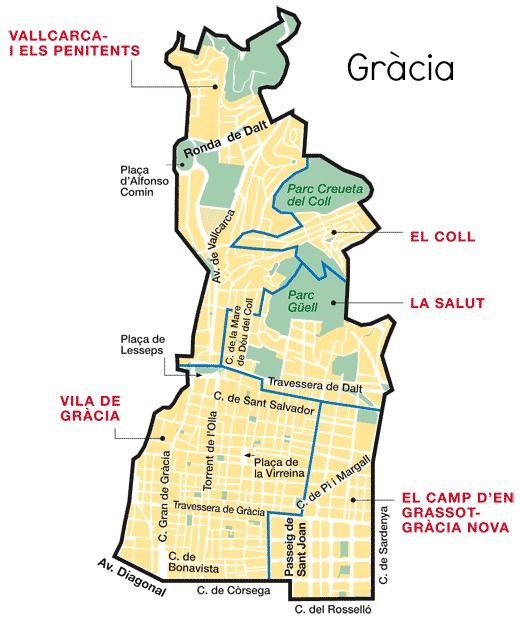
2. Les Corts
Les Corts is one of Barcelona’s more expensive neighborhoods with a mixture of large family homes, stunning townhouses, and luxury apartment blocks. It’s home to two university campuses and Barcelona’s business hub, which leaves it with a varied community made up of families, students, and young professionals.
The neighborhood is also home to Barcelona’s main football stadium and excellent shopping complex, making it a popular place among locals and tourists. And, for when you want to escape the busy streets, it’s just a short walk away from the fringes of Parc Natural de la Serra de Collserola.
3. Sarria – Sant Gervasi
Considered to be one of the most exclusive neighborhoods in Barcelona, Sant Gervasi offers residents stunning green spaces, a community atmosphere, and quiet streets. Houses in Sant Gervasi are some of the most spacious in Barcelona, with many boasting large gardens and swimming pools.
Popular amongst families, the neighborhood boasts excellent connections to the central business district and plenty of international and local schools of superior quality. With all of the shops, services and amenities on your doorstep, you’ll need a good reason to leave Sant Gervasi.
Best neighborhoods in Barcelona for expats
It’s undeniable that Barcelona is a great city for expats. There’s a vibrant city, stunning beaches and a friendly community of expats to go alongside. But choosing where to live in Barcelona is where it gets a bit tricky. Here are a few great picks.
4. Barrio Gotico
Sitting smack bang in the middle of the busy city centre, Barrio Gotico offers up residents the very essence of Barcelona. Its streets are hectic, its architecture unique and the food out of this world. The popularity of this central barrio makes it difficult to find a nice place to call home, but the effort is worth it when you stumble upon the perfect terrace house.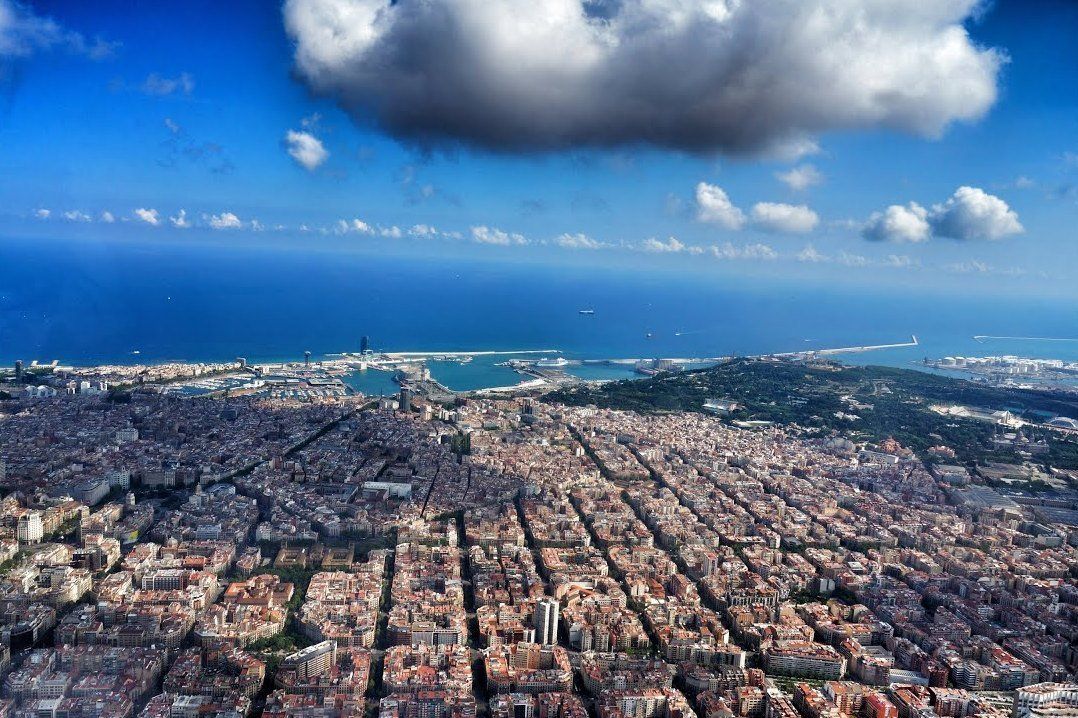
The convenience of living in Barrio Gotico should not go underestimated. Yes, it’s close to shops, bars and restaurants, but it’s also a quick walk away from the beach and Barcelona’s main train stations that can take you out into the suburbs and beyond.
5. El Born
Authentic and full to the brim with old world charm, El Borne is exactly what you might have imagined from Barcelona. Stone buildings line the street, hidden courtyards appear around every corner and independent boutiques and local cafes rule the roost. If you’re looking for a slice of authentic Barcelona, this is it.
El Born is also one of the city’s most international neighborhoods. Expats gather here from all over the world, so you’ll have no problem finding some friends if you’re new in town. With everything in walking distance, you won’t need to worry too much about public transport either. If you do fancy exploring a little further afield, El Born is one of the most well-connected neighborhoods in Barcelona.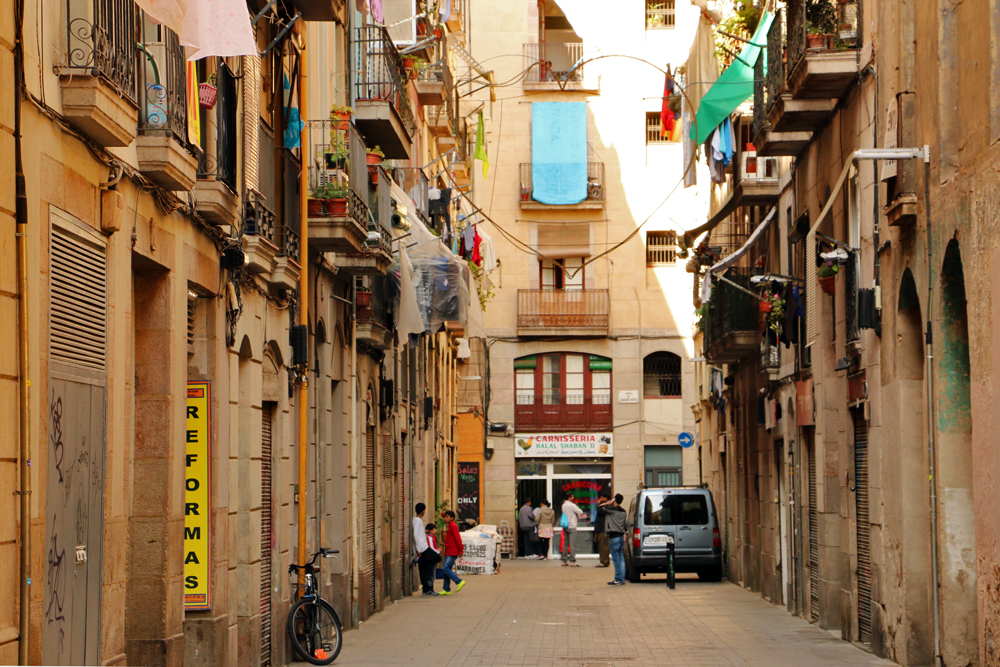
6. Barceloneta
What was once a sleepy fishing town on the edge of Barcelona has now become a residents dream. Offering up access to the beach, a vibrant enough social scene and more than reasonable rent prices, Barcelona doesn’t get much better than Barceloneta. Housing is simple and modest in Barceloneta, but most flats have stunning sea views which is what most people in the area tend to come for.
Best neighborhoods in Barcelona for young professionals
With ever-rising opportunities in the business world, Barcelona is quickly becoming the new kid on the block when it comes to young professional’s favourite cities.
7. L’Eixample
With a name that means ‘extension’ in Catalan, L’Eixample was one of the first areas to be built after the old town of Barcelona. It’s wide streets and grand architecture are reminiscent of the late 19th century when this neighborhood was built.
With an excellent location, unbeatable transport connections and all of the amenities you could wish for, L’Eixample is arguably the best neighborhood to live in in Barcelona.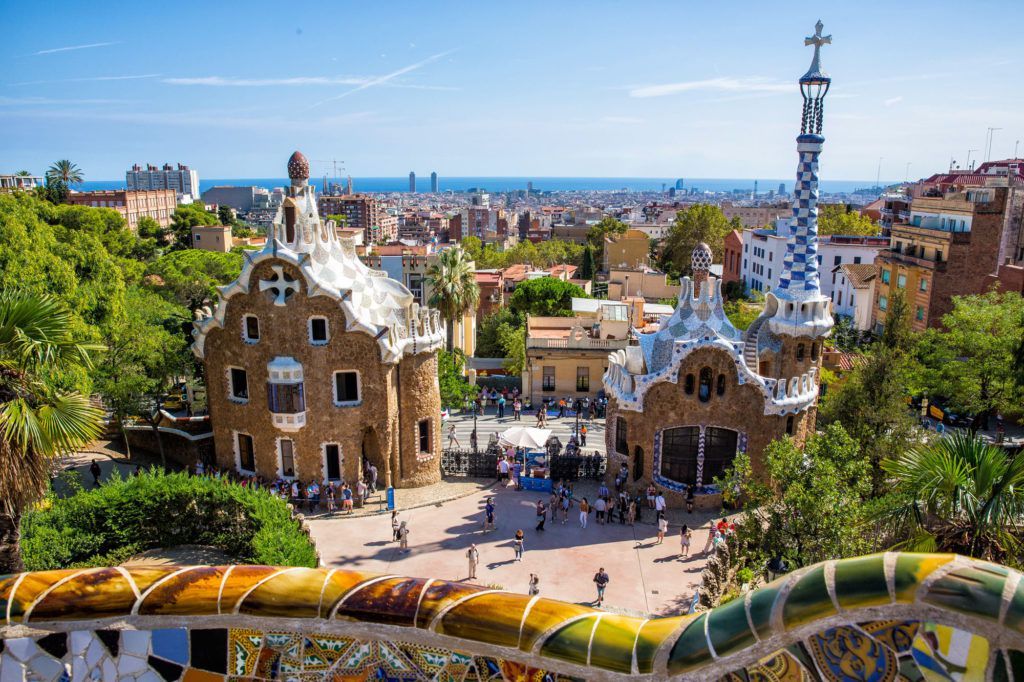
8. Poble Sec
Sitting at the foot of Montjuic and next to the Raval neighborhood, Poble Sec is part of the Sants-Montjuic district. While Poble Sec may not have the busy streets and lively atmosphere of some of Barcelona’s more popular residential areas, it offers up a quiet life and an authentic look into the local’s way of living.
You’ll still find a few family-run restaurants scattered around the streets, and there’s plenty of green space to enjoy. For those nights when you’re looking for livelier streets, it’s only a hop, skip and a jump into Barcelona’s more happening neighborhoods.
9. El Poblenou
Poblenou was once a thriving industrial neighborhood, laden with large factory warehouses and communities of factory workers.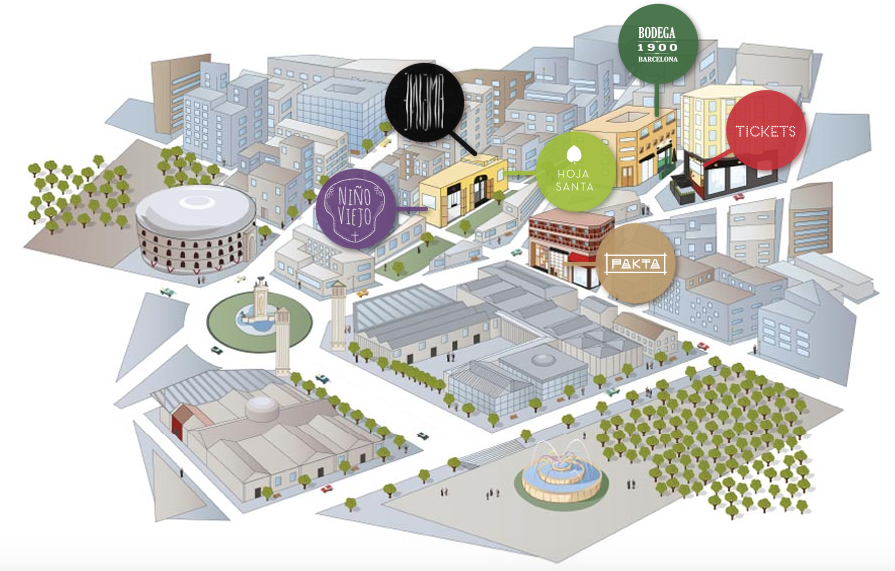
Away from the houses, Poblenou benefits from a stunning beachfront park and very easy beach access, perfect for anyone who wants to be within walking distance of the sea. For this reason the neighborhood has become popular with surfers and the like.
10. Sant Marti
Having so many beaches nearby is definitely one of the perks to living in Barcelona. But which Barcelona neighborhoods offer up the easiest access to the sweeping beaches? The district of Sant Marti.
Home to the impressive Olympic Park and a community of watersports lovers, Sant Marti is about as close to the beach as you can get in Barcelona. This sprawling district boasts a handful of different neighborhoods all offering up a range of housing options, and all of which are within walking distance of Sant Marti’s five beaches.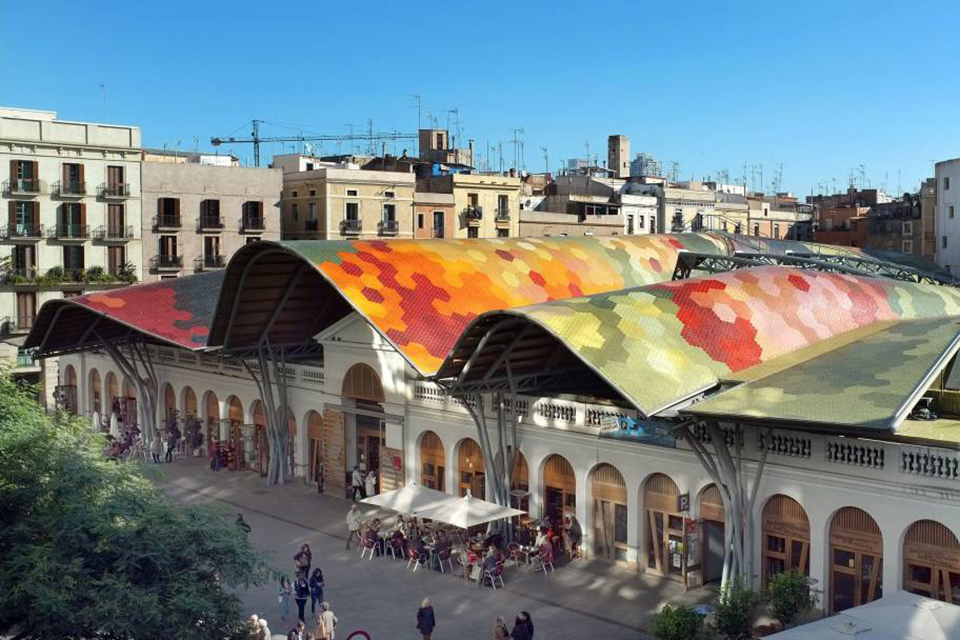
Recently, business has begun to boom in the area, so you’ll find numerous modern shopping centres around as well as modern apartment blocks and pristine beach-side parks.
Affordable or Cheap Neighborhoods to Live in Barcelona
Looking for cheap areas to rent in Barcelona? It’s true that Barcelona isn’t one of Spain’s most affordable cities, but there are plenty of nooks and crannies where you’ll find a bargain without compromising on location. Here are our top picks for the most affordable places to live in Barcelona.
11. El Raval
Rewind two decades, and El Raval was Barcelona’s no-go zone, known for its high crime rates. Fast forward to modern-day Spain, and the neighborhood has become one of the city’s hippest barrios, with a thriving social scene and an underground arts and culture movement that’s on the rise.
With housing options ranging from the affordable to the luxurious, this trendy corner of Barcelona attracts a young crowd made up of both students and young professionals.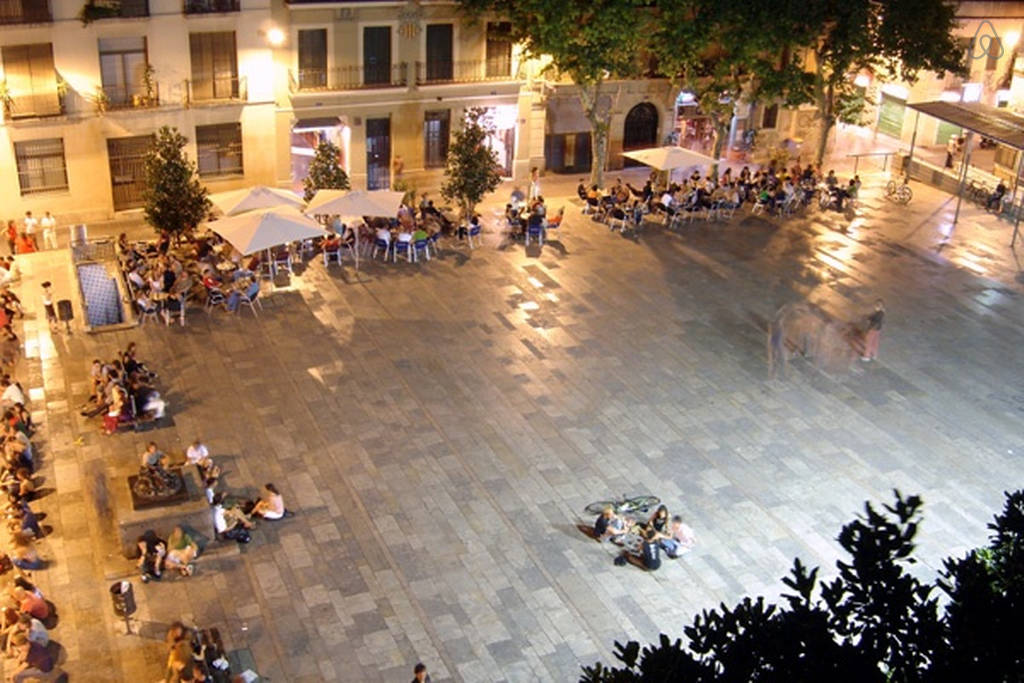
12. Sants-Montjuic
The sprawling district of Sants-Montjuic is, in fact, Barcelona’s largest district and covers several neighborhood areas. It takes its name from the looming hill that watches over Barcelona, also known as Montjuic. While much of Sants-Montjuic is taken up by green spaces, Sants’ neighborhood, sitting at the foot of the mountain, is the most popular residential area.
As a busy port town with excellent transport connections to the city, some say the neighborhood lacks a community feel. However, if it’s affordable housing and green spaces you’re looking for, Sants might just be the location for you.
13. Horta Guinardo
If you love the idea of being within reaching distance of Barcelona, but you don’t want the noise, or the price tag, that comes with it, the neighborhood of Horta Guinardo is a great choice.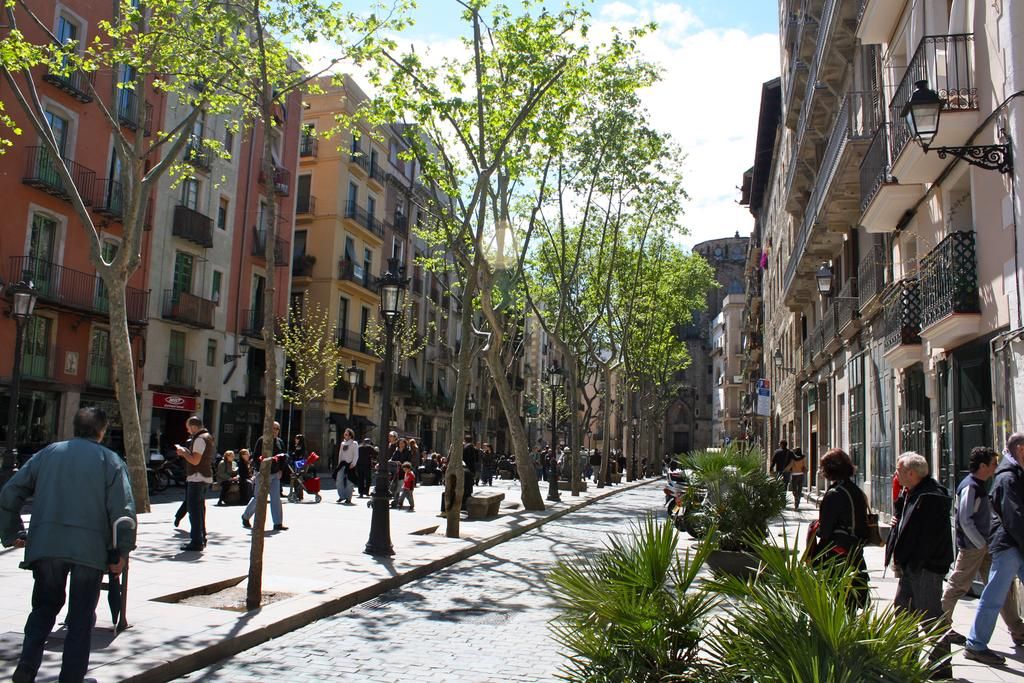
While Horta Guinardo is a self-proclaimed quiet neighborhood, Spaniards come from all over the country to live here. Despite this, house prices and rentals have remained more than affordable, and you’ll even have the added luxury of street-elevators, so you don’t have to tackle the hilly terrain every single day.
Moving to Barcelona during COVID-19
If you’re moving to Barcelona during COVID-19 or moving to a new home in Barcelona, read up on all the rules and regulations that apply for such moves in the Barcelona city website. (Download the Google Translate Plugin to translate the information into your first language)
Other useful COVID-19 resources for your move to Barcelona
- WHO COVID-19 guidance and information
- New York Times tips for relocation during COVID-19
- Spanish Government Coronavirus Updates
Finding Barcelona rentals that meet your requirements
description of the best areas of the city to live in, where to stay, places on the map – Barcelona Realty Group
How Barcelona is divided into areas
Today, the “sea capital” is divided into ten administrative units, the boundaries were defined in 1984: Old Town (Ciudad Velha), Eixample, Sants-Montjuic, Les Corts, Sarria, Gracia, Horta, Nou Barris, Sant Andreu and Sant Martí.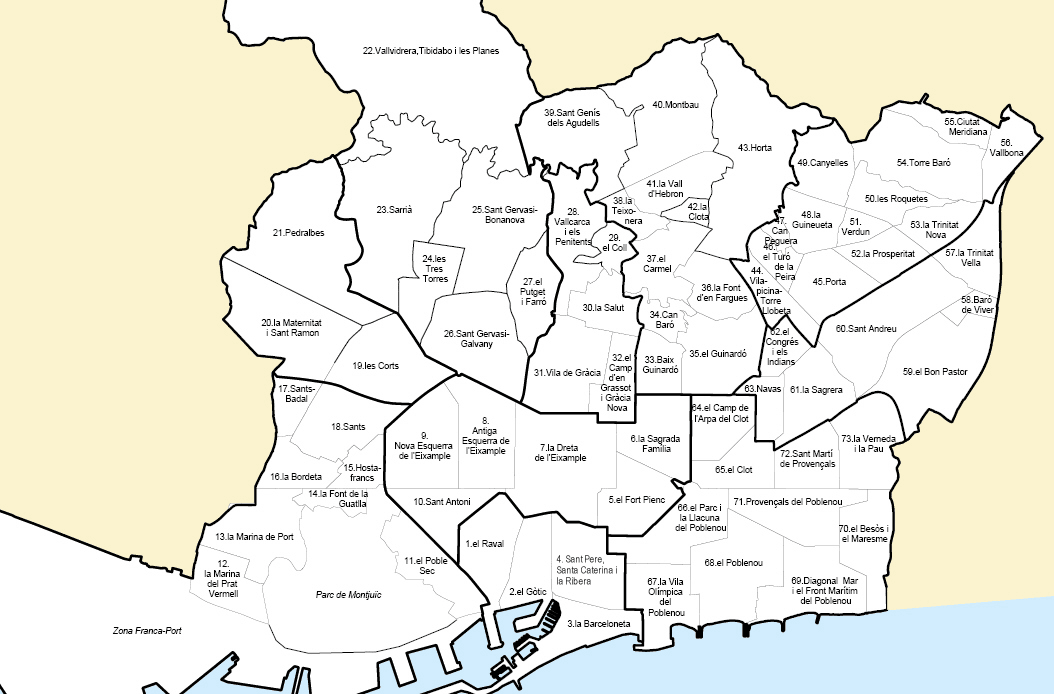
Here you can see a map of Barcelona in Russian showing all the districts of the city:
Since 2009, for convenience, the districts have been further divided into 73 “sub-districts” ( barrios ), many of which used to be independent municipalities. As a result, the metropolis has become even more reminiscent of a multi-colored patchwork quilt, consisting of original areas that do not resemble each other either in the style of building or in the composition of the population. All have their pros and cons, some historically prefer indigenous people to live in, others attract more foreigners. We will tell you what the specifics of each are and what you should pay attention to when choosing a place for permanent residence.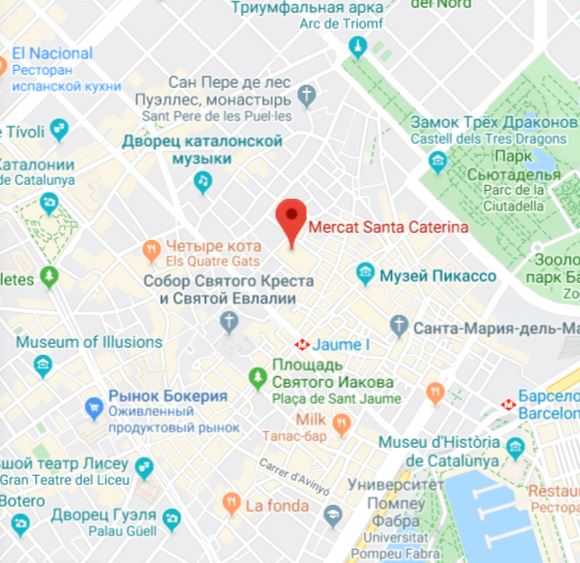
What you need to know about the districts of Barcelona
The urban structure has a number of features. Unlike many resorts, the “law of distance from the beach” applies here: the most prestigious is Zona Alta, 20-30 minutes from the sea, and the seaside Barceloneta, Montjuic or Raval are almost entirely given over to tourists and migrants. An exception is the new sub-district of Diagonal Mar, which today confidently takes the lead in terms of the number of elite complexes.
Also historical characteristics influence the price and prestige of an object. Thus, the Right and Left Eixample are traditionally known as quiet residential districts, loved by the Catalans themselves, with an abundance of markets, schools, parks and other amenities, making the demand for local housing as high as the supply is scarce.
On the other hand, new “dark horses” have recently entered the market, which are worth looking at from the point of view of investments in the future.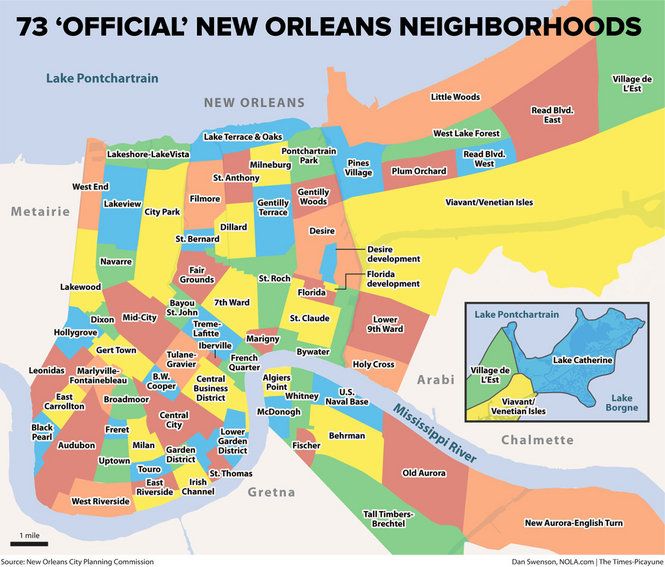
Do not forget that Barcelona is characterized by a rather heterogeneous relief. Some streets of Sarria, Horta, Montjuic or Les Corts are partly or completely located on the hills and are not suitable for all categories of buyers due to the rather steep descent.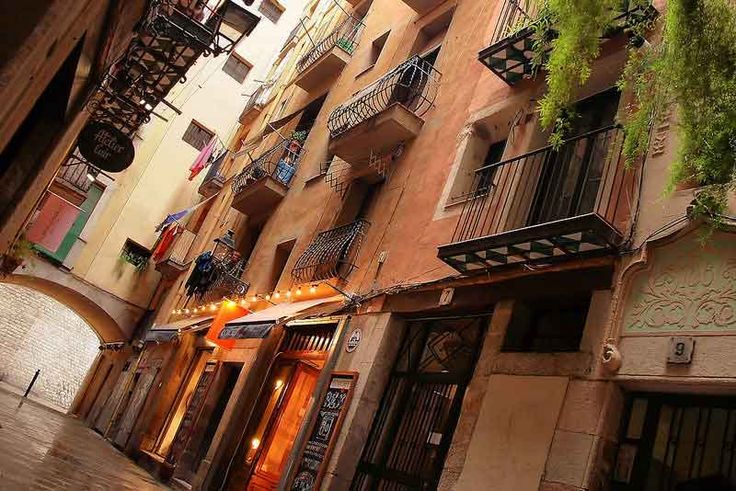
It is impossible not to mention such a criterion as proximity to historical monuments, with which the Catalan capital is so rich: it is not for nothing that it is called an “open-air museum”. Living close to the creations of architectural geniuses is not always a matter of price, but rather of comfort and practicality. So, the objects next to the famous Sagrada Familia have an average price tag for the Eixample, but their main drawback is the almost round-the-clock tourist traffic. Therefore, housing with a view of Gaudí’s creation can only be bought by those who are willing to endure constant noise, crowding and inaccessibility of parking.
When choosing a place to stay, experts recommend renting a hotel nearby for several days, which will allow you to get acquainted with the location at different times of the day.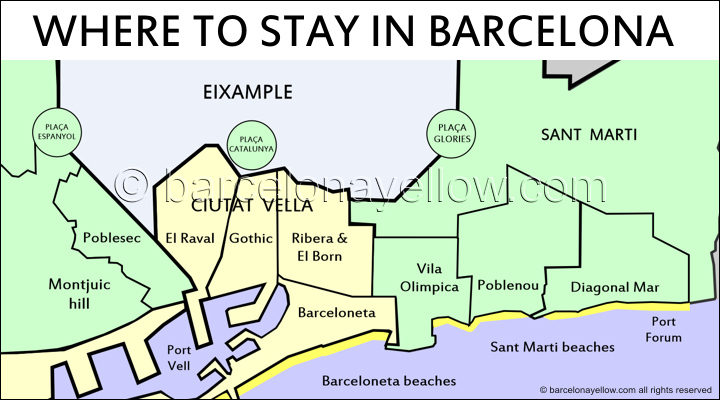
Ciutat Vella
The oldest quarters – Barrio Gotico, Raval, Born and Barceloneta – are located in the center, which is called Ciutat Vella. It is relatively small, and stretched upwards from the sea, to the square quarters of Eixample. On its narrow streets with an incomparable atmosphere and beautiful architecture, the history of the city began to be written.
The people of Barcelona have carefully preserved their historical appearance, carefully fitting modern hotels and apartments into ancient buildings. The number of attractions in this part of the “sea capital” is off scale: these are the oldest markets of Santa Caterina and Boqueria, and the Palace of Catalan Music, and the Picasso Museum, and the legendary temple of Maria del Mar, and the Cathedral, as well as a scattering of centuries-old bars and shops .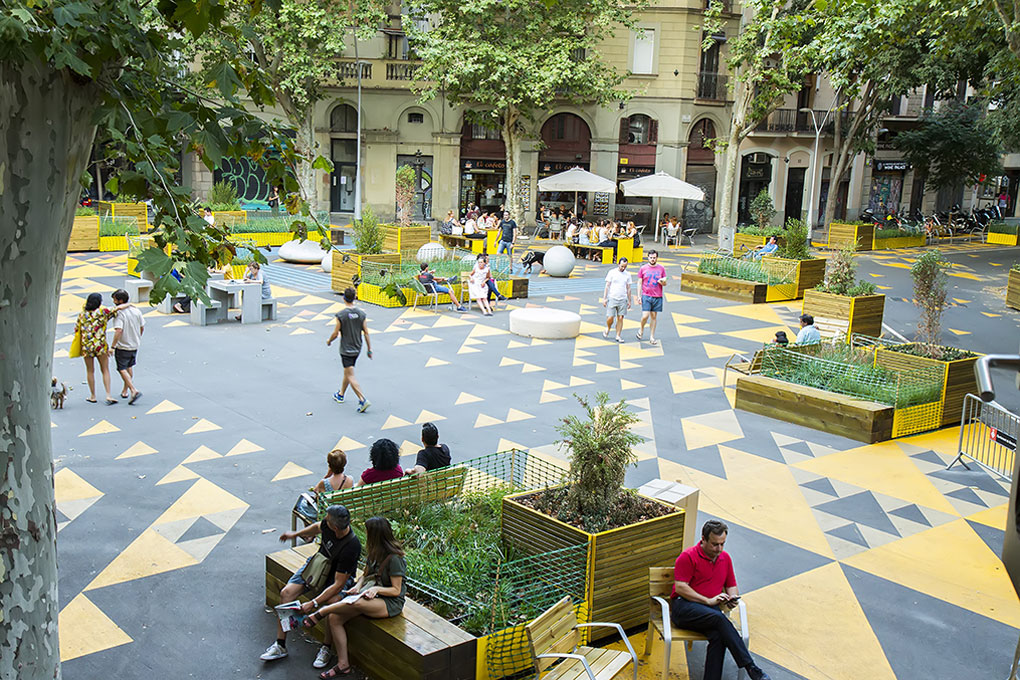
Despite the temptation to live surrounded by masterpieces of architecture, you should be careful when choosing an apartment in Ciutat Vella. The main part of the housing stock is buildings built in the Middle Ages, that is, colorful narrow houses, standing right next to each other, although there are also large, truly luxurious villas of the Catalan nobility. Even if you live in a new or completely renovated historical house, you cannot avoid the risks of using old utilities, as well as all the inconveniences of a pedestrian zone. It will be comfortable to live here for those who always want to be at the epicenter of events, are used to walking and do not seek silence. It is also profitable to buy local real estate for rent, as the interest of tourists in its treasures does not subside even in the winter months.
Average price per square meter: €5,000, for a one-bedroom apartment from €500,000.
Eixample
Eixample is the area most sought after by property buyers, stretching parallel to the sea, between the Old Town and the Upper Zone.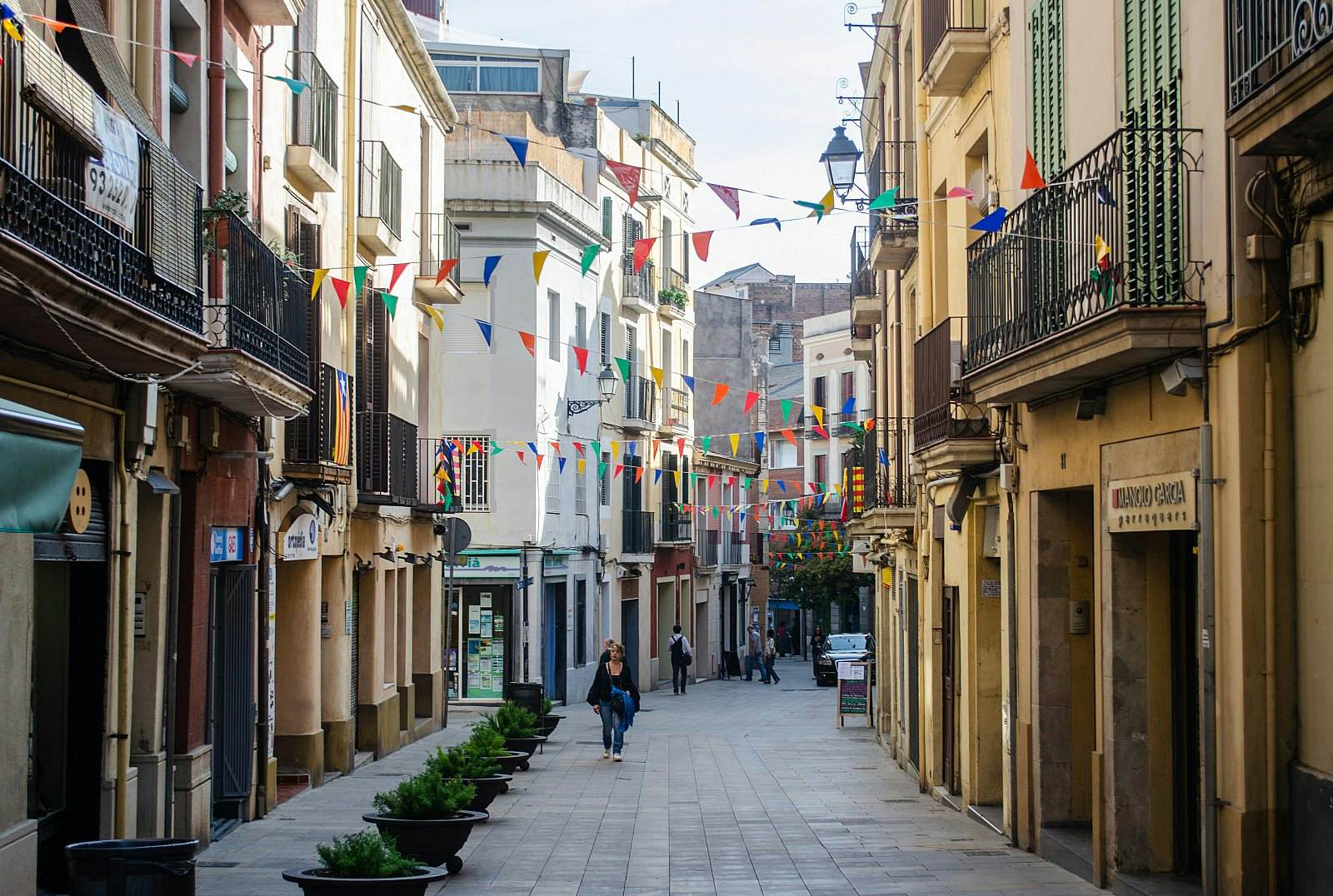
Despite the high cost, the local housing stock is one of the most profitable investments due to its status, constantly rising prices and scarcity of supply. New buildings are almost never erected so as not to disturb the architectural appearance, so the proposed objects are mainly restored buildings from different eras, among which there are real modernist pearls.
Average cost of M²: 5500€, two-room apartment – from 500,000€.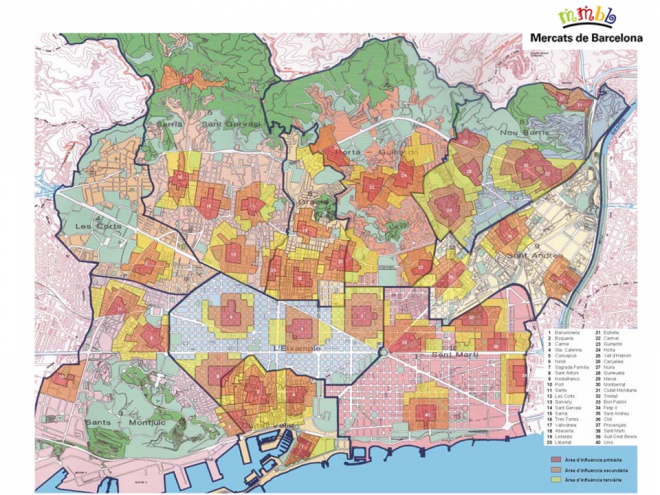
Sants-Montjuic
Mount Montjuic is a hill where one of the most important settlements of the ancient Iberians was located at the dawn of the city’s birth. Today, there is a large residential area, consisting of the former working quarters (Sants), and the port area (Marina-Montjuic). There is also the main Barcelona train station – Estacio de Sants, the Museum of National Art of Catalonia, the legendary Plaza de España, the Magic “singing” fountains, the Sant Jordi Palace, where concerts of world-famous stars take place, as well as the longest shopping street in Europe, Calle de Sants. In addition to all the infrastructure necessary for life, from large shops and markets to inexpensive restaurants and schools, the footage of local facilities is a big plus – most have an area of 70-80m2.
Speaking of which area to live in Barcelona, we can safely recommend the comfortable residential Sants-Montjuic, where the Catalans themselves settle with pleasure.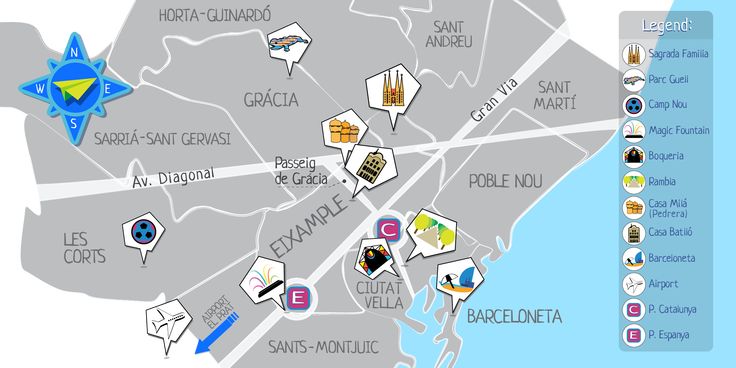
Average cost of M²: 3500€, two-room apartment – from 200,000€.
Les Corts
Les Corts, which became part of Barcelona only in the 19th century, is included in the list of the best and most expensive areas, far from the tourist cycle and receiving rave reviews from homebuyers. Its prestige is determined by the presence of important business centers and offices of large companies, elite clinics and international educational institutions, as well as the home stadium of the legendary FC Barcelona Camp Nou.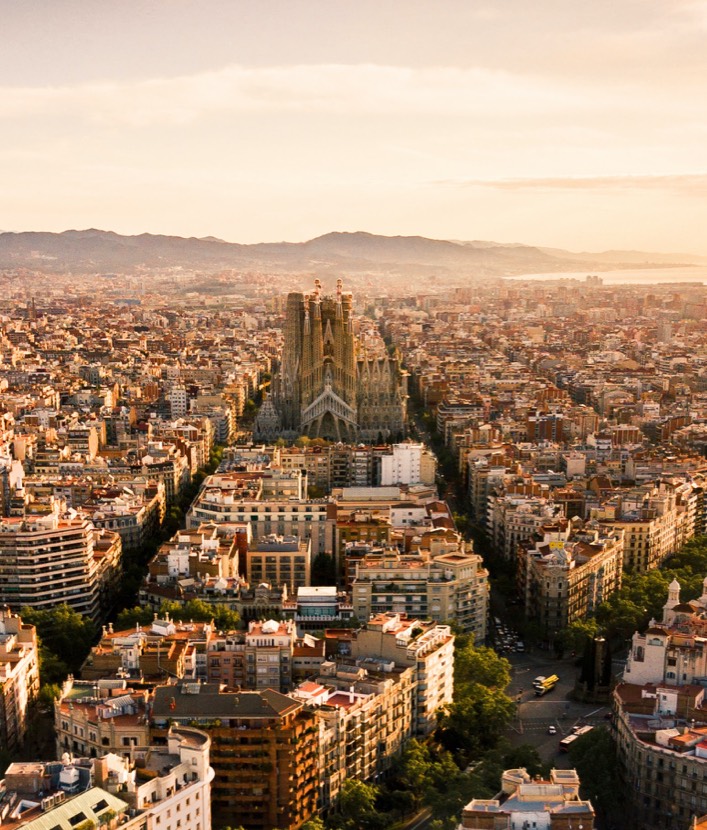
Real estate in Les Corts is not democratic, the price tag is 11% higher than the city average, according to analysts’ calculations, it will only grow. Separately, the elite sub-district of Pedralbes stands out, chosen by members of the royal family, sports, political and business stars. This is the quintessence of luxury and one of the rare places where you can live in a large house with your own garden and swimming pool, although the price will be appropriate: a square meter is estimated at least 6000-7000 euros. Despite the high cost, this is one of the most popular funds for investments, including for rent.
Average price per square meter: 5700€, for a two-room apartment from 400,000€.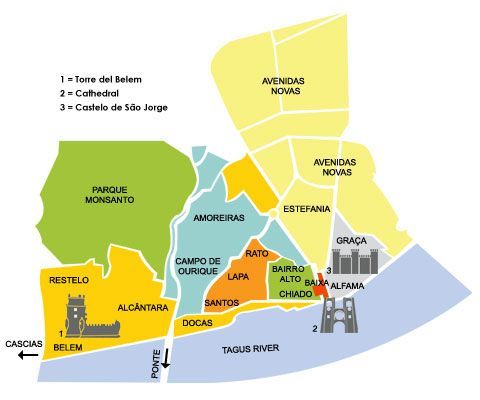
Sarria-Sant Gervasi
Sarria-Sant Gervasi belongs to the exclusive “High Zone” where families with the highest incomes live. Located at a distance from the noisy Old Town, this respectable area is characterized by a special atmosphere, with its own way of life and an amazing combination of antiquity and modernity. Historically, the best educational institutions are concentrated in it, including Escola de Disseny i Art, School of Management, the British school Council-Institut Britanic or Universitat Abat Oliba. Here you can also visit the elegant Sarria market, famous for the highest quality products, as well as glamorous restaurants, boutiques, bars and clubs. Due to the abundance of parks with lush exotic greenery, Sant Gervasi is sometimes called the city’s “lungs”.
This place is chosen for living by those who appreciate silence, space for the whole family, security, and transport accessibility of the center. Unlike other neighborhoods, here you can find really large mansions, townhouses and apartments, new and refurbished, often with a pool and a garden.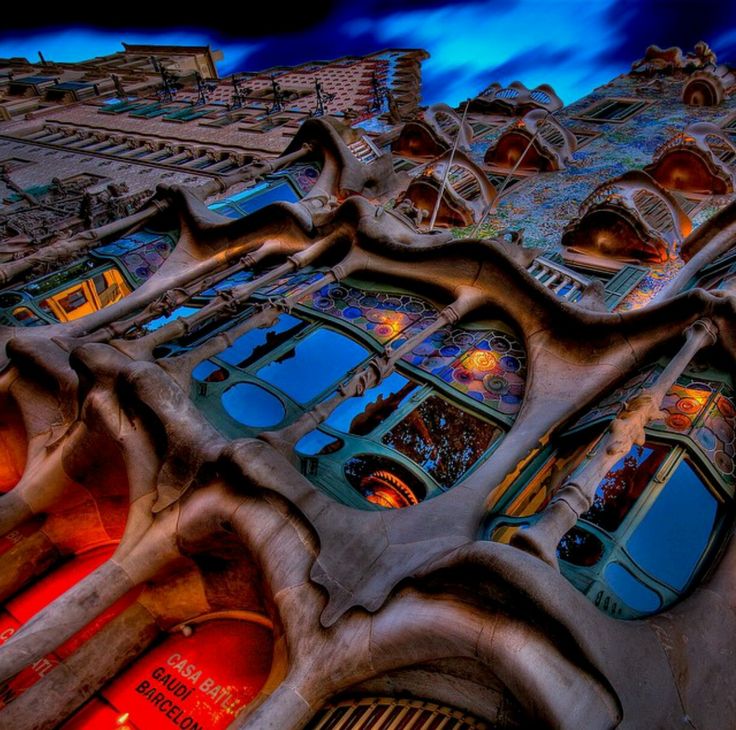
Average price per square meter: 6,000€, two-room apartment – from 500,000€.
Gracia
Gracia has an authentic atmosphere and is considered one of the most interesting areas to live in. It is not so popular with tourists, but it has all the necessary infrastructure and good communication with the center. In this long-time bohemian corner, you can find trendy theaters and art galleries, designer boutiques and restaurants, colorful markets and interesting bars. In the northern part of the barrio, many old mansions of the Catalan nobility have been preserved, today turned into museums, colleges or cultural associations. Among them, one cannot fail to mention the legendary Park Güell complex, the brainchild of the genius of modernism Antoni Gaudí, from where magnificent panoramic views of the city’s rooftops and the sea open up.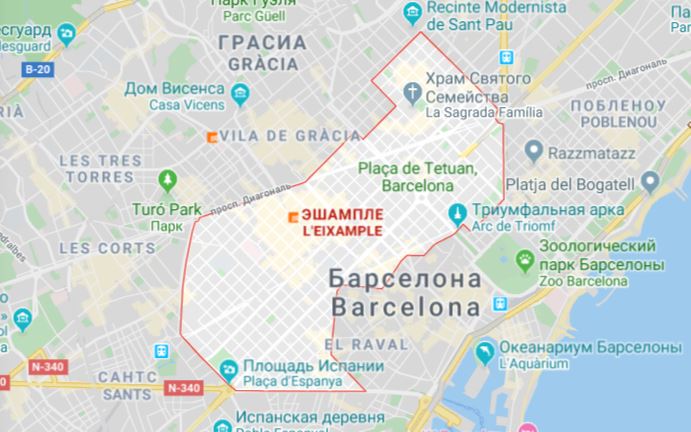
Although Gracia is very popular with foreigners, it is still considered the most “Catalan” area, with its own atmosphere and lack of tourist trails. Housing prices depend on the location and condition of the object, but are generally considered among the lowest. Among the shortcomings are small footage, the lack of large chain stores and supermarkets, and the steep character of some streets.
Average cost of M²: 4700€, two-room apartment – from 350,000€.
Horta-Guinardo
Situated in the hills in the upper part of Barcelona, Horta-Guinardo is the third largest barrio adjoining Gracia. Once a suburb, it is still cozy, unhurried and comfortable in a rustic way.
Walking along its ancient streets, you can see elegant villas, reminding that it was once a favorite vacation spot of the nobility. Today, everything you need for life is here: large supermarkets and schools, parks and restaurants, universities and libraries, as well as several tourist attractions, including the Sant Pau Hospital, a UNESCO World Heritage Site, or the famous labyrinth park.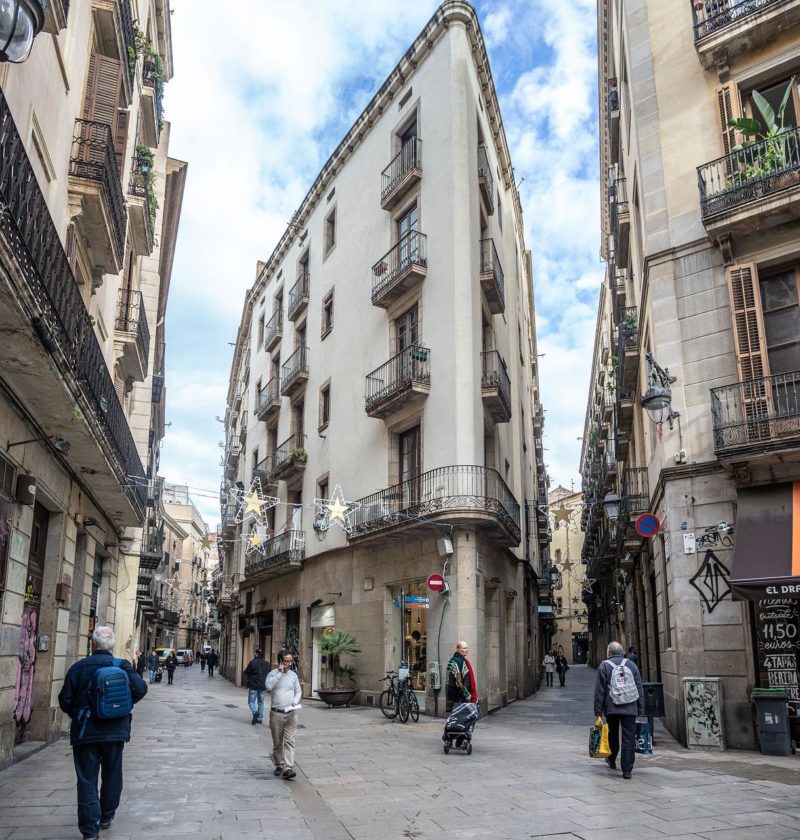
Guinardo is one of the most democratic areas, with fairly low rates for decent spacious housing and a family atmosphere. It can be recommended to any category of buyers, you just have to consider that due to its location on a hill, many streets have a rather steep descent. As a bonus, residents have stunning sea views from most of the apartments and clean air. Another plus is the growing popularity of local real estate among foreigners, which leads to a constant rise in price and active development.
Average price per square meter: 3300€, two-room apartment from 200,000€.
Nou Barris
Located on the outskirts, Nou Barris has the reputation of being a typical immigrant territory, with low housing prices and not the most calm criminal environment. Here from 50-70 years. of the last century, workers who came to the capital in search of a better life settled in typical block-boxes. The active efforts of the mayor’s office to replace the decrepit fund with new buildings, landscaping and getting rid of suspicious personalities in recent years have somewhat changed its image, but so far have not been able to completely wash away the stamp of marginality.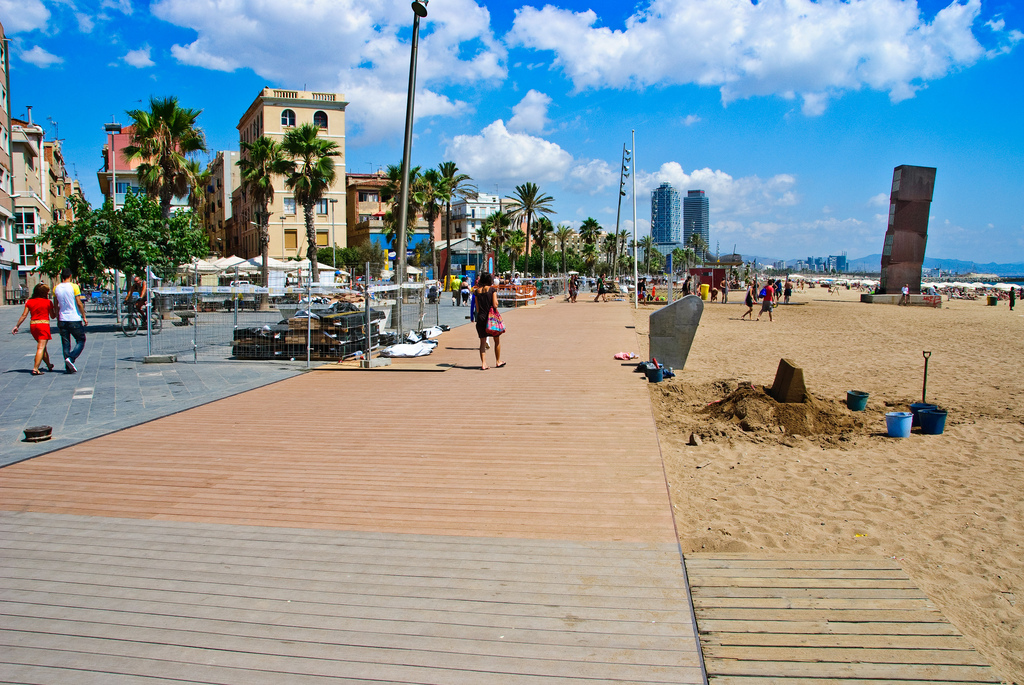
Despite the cheap square footage, Nou Barris is not a commonly recommended area for buying an apartment. However, against the backdrop of constantly rising property prices in other parts of the metropolis, many Barcelona residents are beginning to show interest in local housing as a possible alternative for profitable investments. Particularly in demand are properties in the sub-districts of Porta, La Prosperitat and Les Roquetes, at the other end of consumer demand is Ciudad Meridiana, considered the poorest metropolitan barrio.
Average cost per m²: 2500 €, two-room apartment – from 150 000 €.
Sant Andreu
Describing the best areas to live in, Sant Andreu, a former industrial area on the northern outskirts of Barcelona, is complete.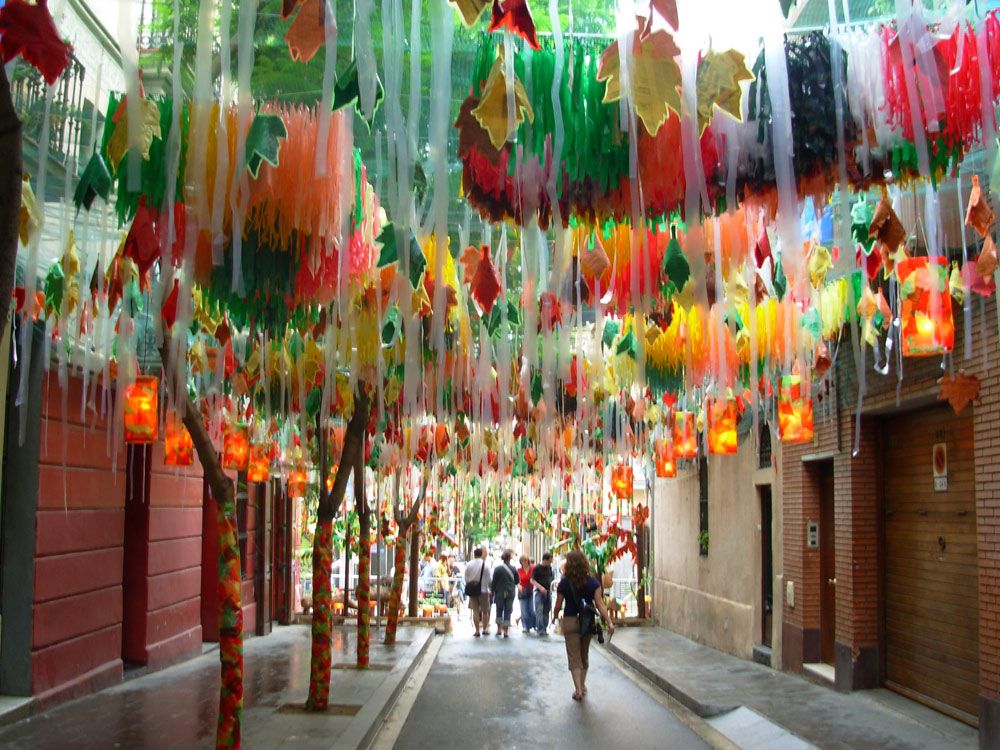
Real estate in Sant Andreu is not suitable for nightlife hunters or active shopping, but it will be the right choice for families with children, pensioners and lovers of silence. The conversion of old factories into art galleries and cultural centers and the opening of a number of trendy establishments is also attracting a bohemian and hipster crowd looking for affordable housing and new spaces for inspiration.
Average cost of M²: 3200€, two-room apartment – from 250,000€.
Sant Marti
Sant Marti, once an industrial area, is now the most fashionable place, popular with foreign professionals and creative youth. This part deserves the name “city of contrasts” more than others: futuristic skyscrapers here are adjacent to modest fishermen’s houses, and luxurious hotels and apartments are being built right in the buildings of old factories. The Diagonal business zone is also located here, where the headquarters of most international corporations and innovative start-ups, laboratories and research centers are concentrated. Symbols of the barrio are the famous Torre Agbar by French architect Jean Nouvel and the Rambla Poblenou, full of trendy restaurants, bars and art galleries.
Separately, it is worth highlighting Diagonal Mar – the only one of the seaside areas that is considered prestigious. This is a kind of futuristic city, consisting of high-rise ultra-modern residential complexes and luxury hotels.
San Martí is one of the few places in the city where large hotels and luxury residential complexes continue to be built with spacious, bright apartments, gyms and swimming pools. The cost of local real estate is above average, according to experts, will continue to grow in the future. The most expensive is housing in Diagonal Mar – a square meter is estimated at about 7,000 euros.
Average cost of M²: 5000€, two-room apartment – from 500,000€.
Where to live in Barcelona
In terms of prestige and status, the main concentration of the most luxurious objects falls on the “Upper zone” of the Catalan capital, that is, the Sarrià-Sant-Gervasi, Eixample and Les Corts areas, followed by Diagonal Mar in San Marti.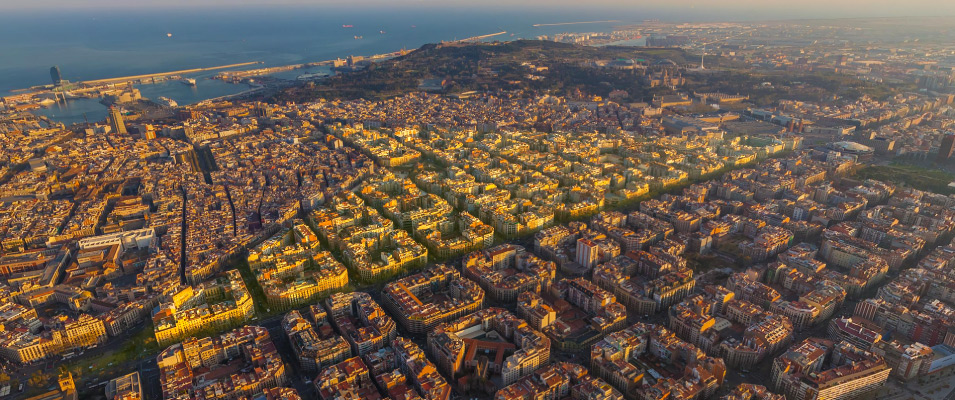
However, answering the question which areas of Barcelona are the best for living, it should be noted that “prestigious” is not always “expensive”. You can live comfortably in many parts of the city: the availability of parking lots and large chain supermarkets, parks, schools and kindergartens, transport links with the center and security can serve as a criterion. From this point of view, suitable places to live for couples with children will be neighborhoods remote from the center, with a large number of parks, developed infrastructure and relatively low housing prices, such as Horta, Gracia or Sants-Montjuic, and the young, not particularly picky the audience and students will be attracted by the always lively Eixample, Maternitat y San Ramon, Born and the Gothic Quarter.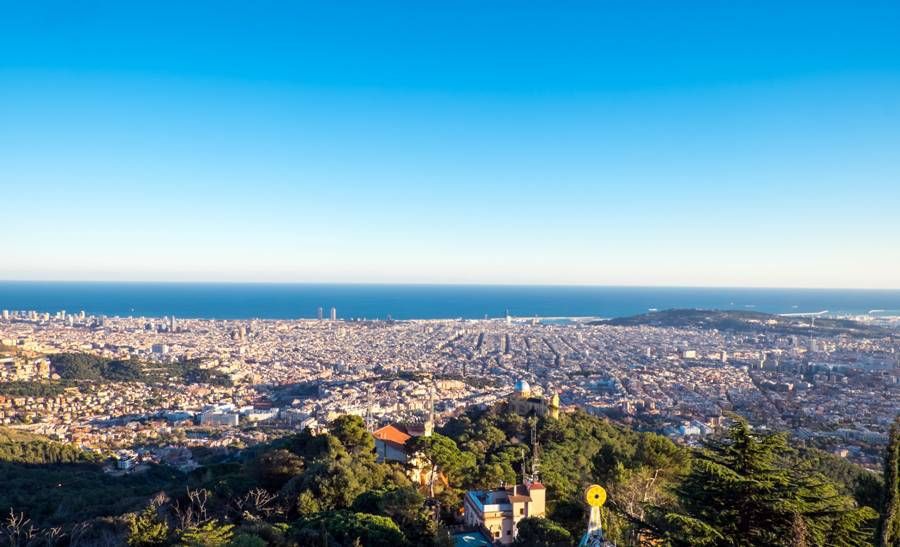
Unfavorable places
Like every capital city, there are good and bad areas in Barcelona. Disadvantaged areas are characterized by low rental rates, so they most often become the choice of unemployed emigrants from the hot South, who are not always doing legal business.
A striking example is the seaside La Mina, which is part of the district of Sant Adrian de Besos. This panel microdistrict, built for workers from Andalusia, gradually turned into a refuge for poor gypsy families and for a long time was considered the main “ghetto” of the capital of Catalonia. In recent years, the Generalitat has seriously taken up bringing the area to its proper form: unreliable residents are gradually being forced out to the periphery, new attractive complexes are being built, luxurious parks are being laid out, police raids are constantly carried out, however, it will take some time to restore the reputation of La Mina.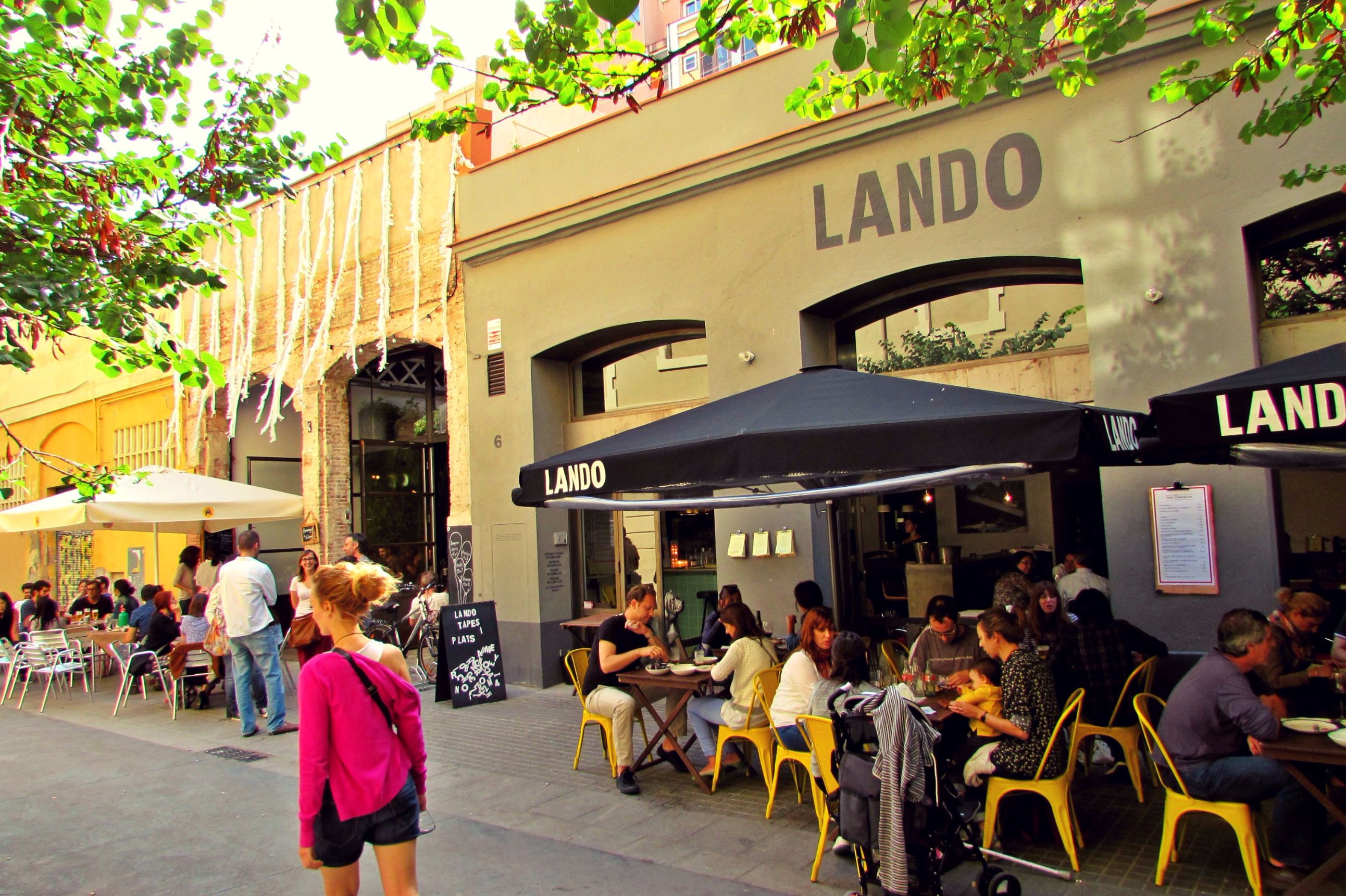
Raval is another hostage of notoriety. Located a step away from the main Barcelona street Las Ramblas, this barrio was traditionally populated by visitors from all over the world, which did not have the most positive impact on its criminal situation. For many years, the zone was a haven for a disadvantaged contingent. In the 80s, the mayor’s office actively took up bringing the Raval to its proper form, but despite this, foreigners still prefer to buy local inexpensive housing for rent, since it will never cease to be in demand among the ubiquitous tourists.
Beach Barceloneta is the oldest part of the city, where fishermen and sailor families traditionally settled. Its narrow picturesque streets descend to the sea and are simply bursting with all types of restaurants, bars and taverns, but, like many coastal areas, they attract not only enthusiastic tourists, but also crime. The housing stock is quite old and does not differ in large footage. However, the proximity of the beach, the sea view and the specific charm of the local streets are sufficient reason for ignoring minor troubles for many, so those who are looking for a house for temporary residence – for a period of study or vacation – are happy to choose Barceloneta.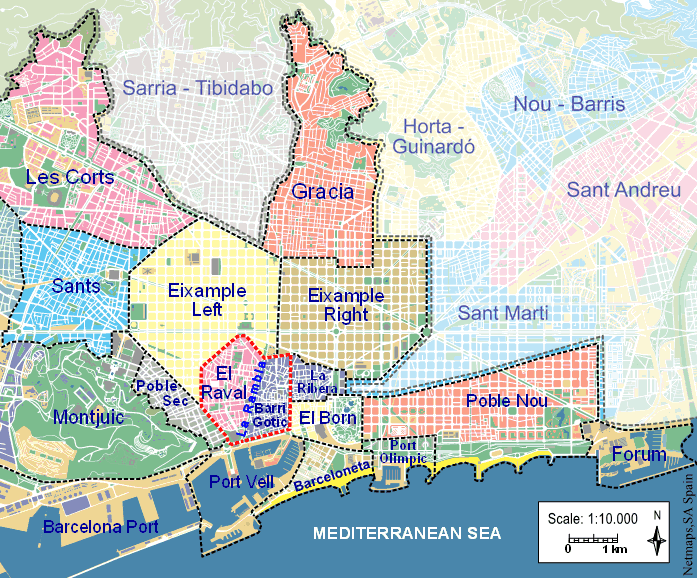
Without knowledge of the specifics of the city, without knowing Spanish and the experience of buying a home abroad, it is easy to fall into the hands of scammers or unscrupulous sellers. By contacting the specialists of the BARCELONA REALTY GROUP,
, you will receive clear, truthful information about the chosen building and its location and will be able to make the right choice in which area of Barcelona is better to stay. Our realtors and relocation specialists will not only select an apartment or house in accordance with your wishes, but will also stand up for your interests, assist in obtaining a residence permit and a mortgage, calculate the profitability of the project and hire maintenance personnel. Leave a request on the website or contact us at the indicated phone numbers, and we will help you choose the home of your dreams.
description of the best areas of the city to live in, where to stay, places on the map – Barcelona Realty Group
How Barcelona is divided into areas whose boundaries were defined in 1984: Old Town (Ciudad Velha), Eixample, Sants-Montjuic, Les Corts, Sarria, Gracia, Horta, Nou Barris, Sant Andreu and Sant Martí.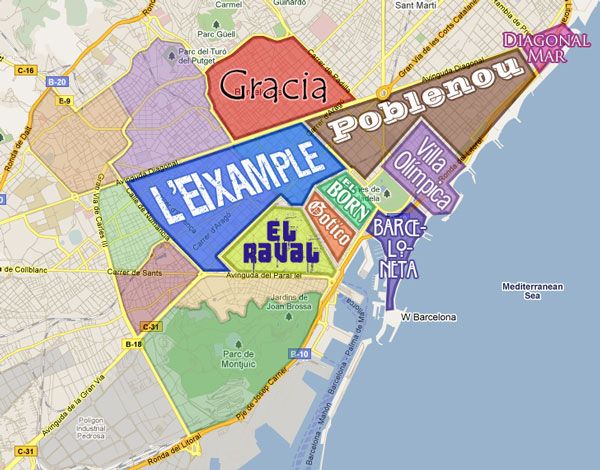
Here you can see a map of Barcelona in Russian showing all the districts of the city:
Since 2009, for convenience, the districts have been further divided into 73 “sub-districts” ( barrios ), many of which used to be independent municipalities. As a result, the metropolis has become even more reminiscent of a multi-colored patchwork quilt, consisting of original areas that do not resemble each other either in the style of building or in the composition of the population. All have their pros and cons, some historically prefer indigenous people to live in, others attract more foreigners. We will tell you what the specifics of each are and what you should pay attention to when choosing a place for permanent residence.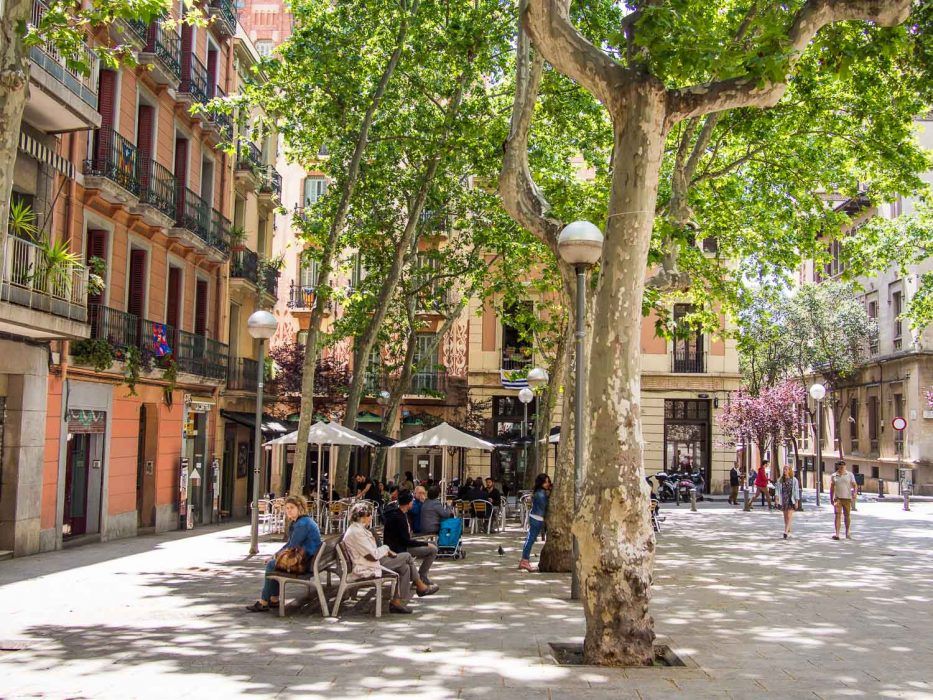
What you need to know about the districts of Barcelona
The urban structure has a number of features. Unlike many resorts, the “law of distance from the beach” applies here: the most prestigious is Zona Alta, 20-30 minutes from the sea, and the seaside Barceloneta, Montjuic or Raval are almost entirely given over to tourists and migrants. An exception is the new sub-district of Diagonal Mar, which today confidently takes the lead in terms of the number of elite complexes.
Also historical characteristics influence the price and prestige of an object. Thus, the Right and Left Eixample are traditionally known as quiet residential districts, loved by the Catalans themselves, with an abundance of markets, schools, parks and other amenities, making the demand for local housing as high as the supply is scarce.
On the other hand, new “dark horses” have recently entered the market, which are worth looking at from the point of view of investments in the future.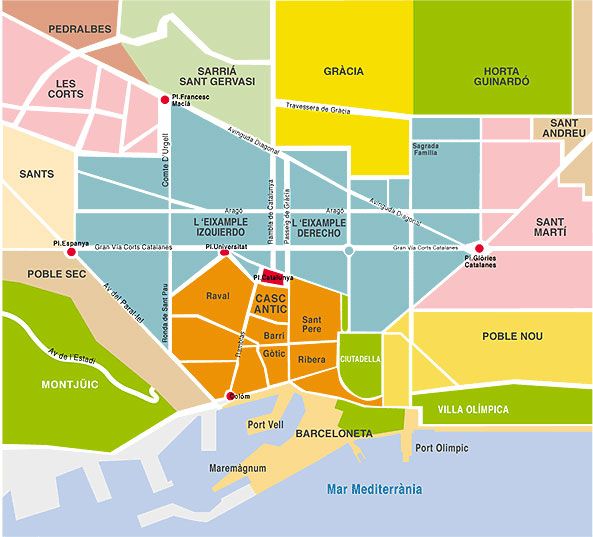
Do not forget that Barcelona is characterized by a rather heterogeneous relief. Some streets of Sarria, Horta, Montjuic or Les Corts are partly or completely located on the hills and are not suitable for all categories of buyers due to the rather steep descent.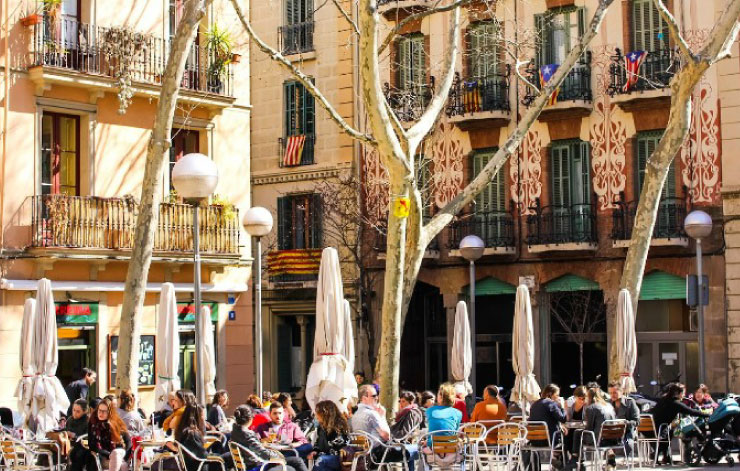
It is impossible not to mention such a criterion as proximity to historical monuments, with which the Catalan capital is so rich: it is not for nothing that it is called an “open-air museum”. Living close to the creations of architectural geniuses is not always a matter of price, but rather of comfort and practicality. So, the objects next to the famous Sagrada Familia have an average price tag for the Eixample, but their main drawback is the almost round-the-clock tourist traffic. Therefore, housing with a view of Gaudí’s creation can only be bought by those who are willing to endure constant noise, crowding and inaccessibility of parking.
When choosing a place to stay, experts recommend renting a hotel nearby for several days, which will allow you to get acquainted with the location at different times of the day.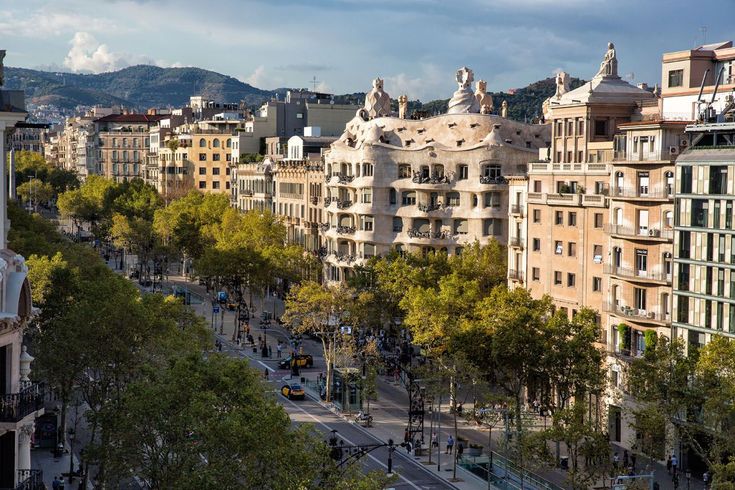
Ciutat Vella
The oldest quarters – Barrio Gotico, Raval, Born and Barceloneta – are located in the center, which is called Ciutat Vella. It is relatively small, and stretched upwards from the sea, to the square quarters of Eixample. On its narrow streets with an incomparable atmosphere and beautiful architecture, the history of the city began to be written.
The people of Barcelona have carefully preserved their historical appearance, carefully fitting modern hotels and apartments into ancient buildings. The number of attractions in this part of the “sea capital” is off scale: these are the oldest markets of Santa Caterina and Boqueria, and the Palace of Catalan Music, and the Picasso Museum, and the legendary temple of Maria del Mar, and the Cathedral, as well as a scattering of centuries-old bars and shops .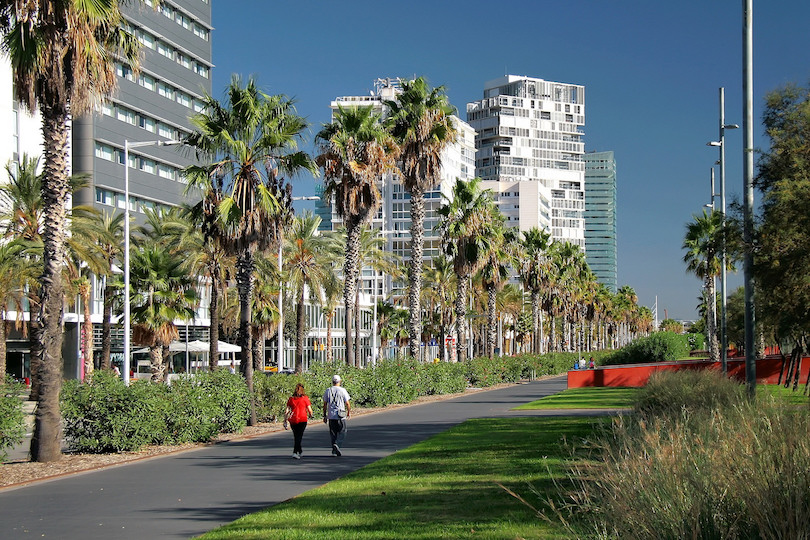
Despite the temptation to live surrounded by masterpieces of architecture, you should be careful when choosing an apartment in Ciutat Vella. The main part of the housing stock is buildings built in the Middle Ages, that is, colorful narrow houses, standing right next to each other, although there are also large, truly luxurious villas of the Catalan nobility. Even if you live in a new or completely renovated historical house, you cannot avoid the risks of using old utilities, as well as all the inconveniences of a pedestrian zone. It will be comfortable to live here for those who always want to be at the epicenter of events, are used to walking and do not seek silence. It is also profitable to buy local real estate for rent, as the interest of tourists in its treasures does not subside even in the winter months.
Average price per square meter: €5,000, for a one-bedroom apartment from €500,000.
Eixample
Eixample is the area most sought after by property buyers, stretching parallel to the sea, between the Old Town and the Upper Zone.
Despite the high cost, the local housing stock is one of the most profitable investments due to its status, constantly rising prices and scarcity of supply. New buildings are almost never erected so as not to disturb the architectural appearance, so the proposed objects are mainly restored buildings from different eras, among which there are real modernist pearls.
Average cost of M²: 5500€, two-room apartment – from 500,000€.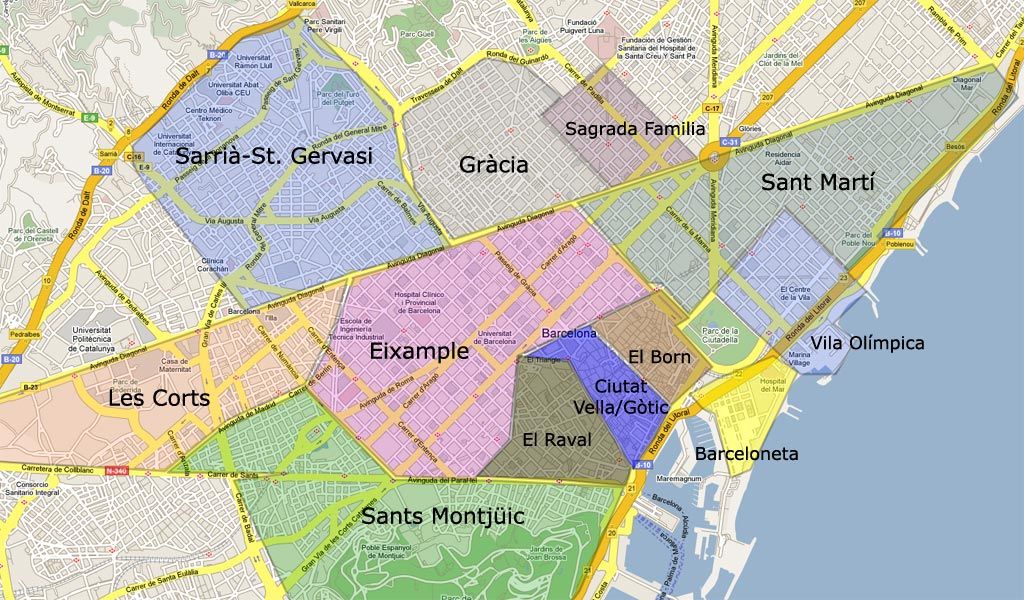
Sants-Montjuic
Mount Montjuic is a hill where one of the most important settlements of the ancient Iberians was located at the dawn of the city’s birth. Today, there is a large residential area, consisting of the former working quarters (Sants), and the port area (Marina-Montjuic). There is also the main Barcelona train station – Estacio de Sants, the Museum of National Art of Catalonia, the legendary Plaza de España, the Magic “singing” fountains, the Sant Jordi Palace, where concerts of world-famous stars take place, as well as the longest shopping street in Europe, Calle de Sants. In addition to all the infrastructure necessary for life, from large shops and markets to inexpensive restaurants and schools, the footage of local facilities is a big plus – most have an area of 70-80m2.
Speaking of which area to live in Barcelona, we can safely recommend the comfortable residential Sants-Montjuic, where the Catalans themselves settle with pleasure.
Average cost of M²: 3500€, two-room apartment – from 200,000€.
Les Corts
Les Corts, which became part of Barcelona only in the 19th century, is included in the list of the best and most expensive areas, far from the tourist cycle and receiving rave reviews from homebuyers. Its prestige is determined by the presence of important business centers and offices of large companies, elite clinics and international educational institutions, as well as the home stadium of the legendary FC Barcelona Camp Nou.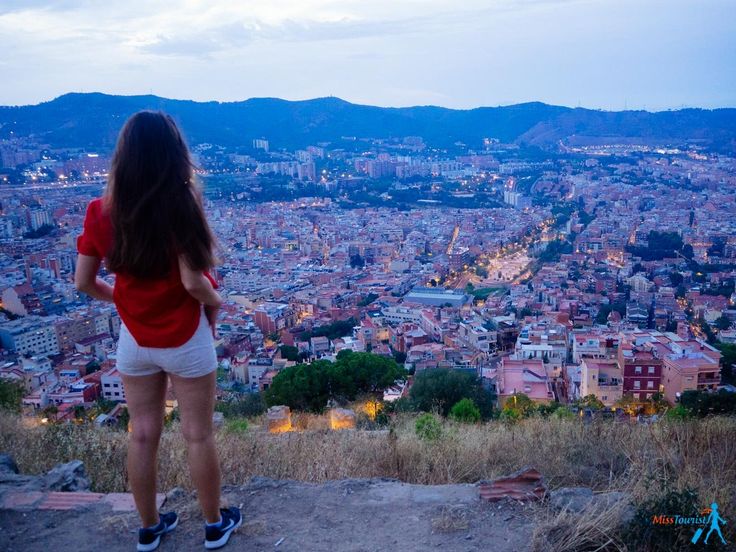
Real estate in Les Corts is not democratic, the price tag is 11% higher than the city average, according to analysts’ calculations, it will only grow. Separately, the elite sub-district of Pedralbes stands out, chosen by members of the royal family, sports, political and business stars. This is the quintessence of luxury and one of the rare places where you can live in a large house with your own garden and swimming pool, although the price will be appropriate: a square meter is estimated at least 6000-7000 euros. Despite the high cost, this is one of the most popular funds for investments, including for rent.
Average price per square meter: 5700€, for a two-room apartment from 400,000€.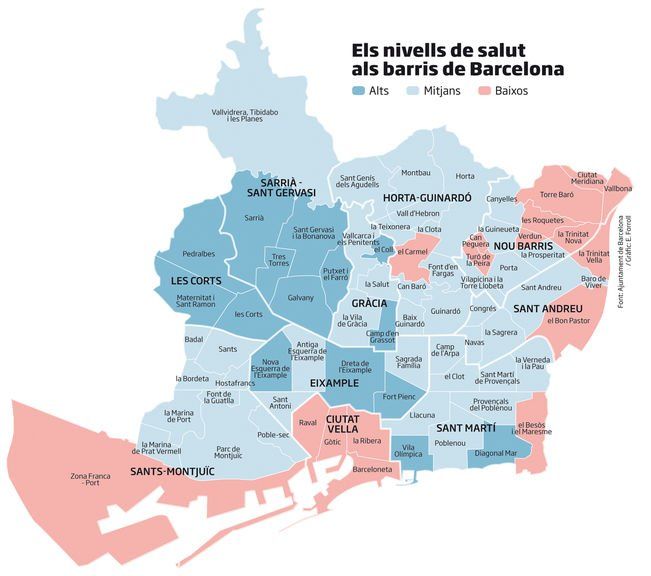
Sarria-Sant Gervasi
Sarria-Sant Gervasi belongs to the exclusive “High Zone” where families with the highest incomes live. Located at a distance from the noisy Old Town, this respectable area is characterized by a special atmosphere, with its own way of life and an amazing combination of antiquity and modernity. Historically, the best educational institutions are concentrated in it, including Escola de Disseny i Art, School of Management, the British school Council-Institut Britanic or Universitat Abat Oliba. Here you can also visit the elegant Sarria market, famous for the highest quality products, as well as glamorous restaurants, boutiques, bars and clubs. Due to the abundance of parks with lush exotic greenery, Sant Gervasi is sometimes called the city’s “lungs”.
This place is chosen for living by those who appreciate silence, space for the whole family, security, and transport accessibility of the center. Unlike other neighborhoods, here you can find really large mansions, townhouses and apartments, new and refurbished, often with a pool and a garden.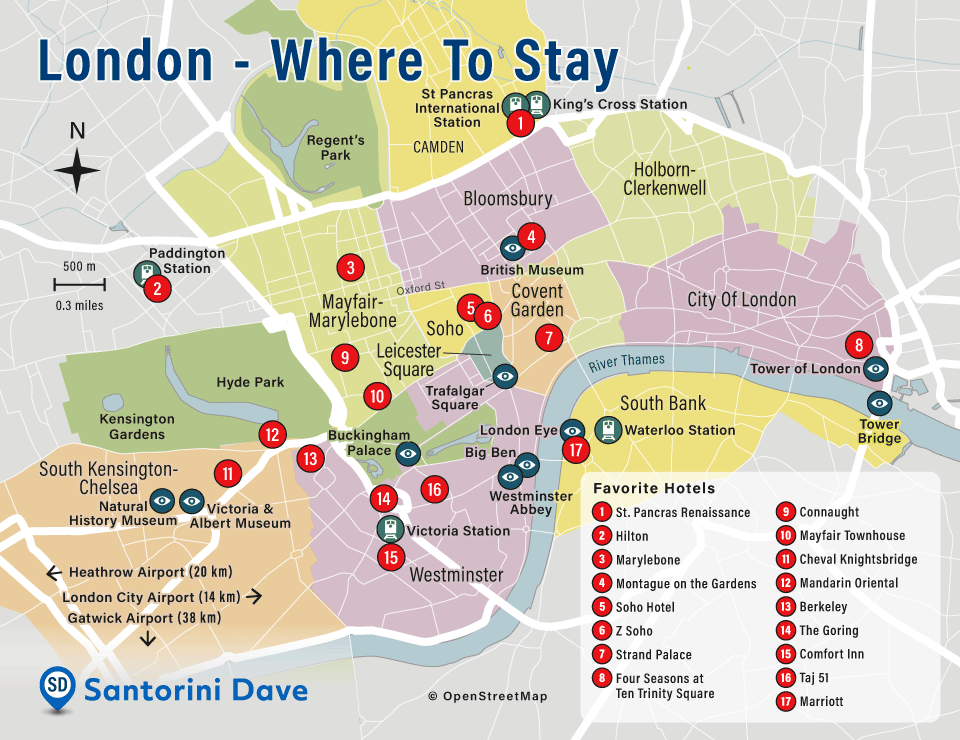
Average price per square meter: 6,000€, two-room apartment – from 500,000€.
Gracia
Gracia has an authentic atmosphere and is considered one of the most interesting areas to live in. It is not so popular with tourists, but it has all the necessary infrastructure and good communication with the center. In this long-time bohemian corner, you can find trendy theaters and art galleries, designer boutiques and restaurants, colorful markets and interesting bars. In the northern part of the barrio, many old mansions of the Catalan nobility have been preserved, today turned into museums, colleges or cultural associations. Among them, one cannot fail to mention the legendary Park Güell complex, the brainchild of the genius of modernism Antoni Gaudí, from where magnificent panoramic views of the city’s rooftops and the sea open up.
Although Gracia is very popular with foreigners, it is still considered the most “Catalan” area, with its own atmosphere and lack of tourist trails. Housing prices depend on the location and condition of the object, but are generally considered among the lowest. Among the shortcomings are small footage, the lack of large chain stores and supermarkets, and the steep character of some streets.
Average cost of M²: 4700€, two-room apartment – from 350,000€.
Horta-Guinardo
Situated in the hills in the upper part of Barcelona, Horta-Guinardo is the third largest barrio adjoining Gracia. Once a suburb, it is still cozy, unhurried and comfortable in a rustic way.
Walking along its ancient streets, you can see elegant villas, reminding that it was once a favorite vacation spot of the nobility. Today, everything you need for life is here: large supermarkets and schools, parks and restaurants, universities and libraries, as well as several tourist attractions, including the Sant Pau Hospital, a UNESCO World Heritage Site, or the famous labyrinth park.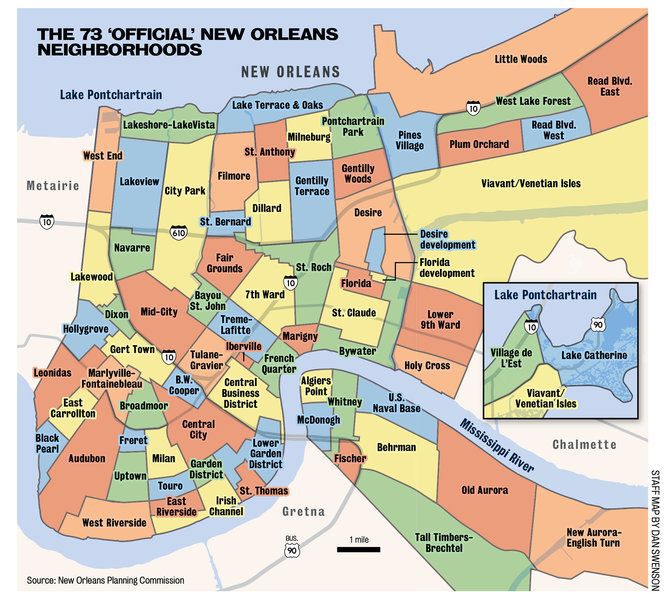
Guinardo is one of the most democratic areas, with fairly low rates for decent spacious housing and a family atmosphere. It can be recommended to any category of buyers, you just have to consider that due to its location on a hill, many streets have a rather steep descent. As a bonus, residents have stunning sea views from most of the apartments and clean air. Another plus is the growing popularity of local real estate among foreigners, which leads to a constant rise in price and active development.
Average price per square meter: 3300€, two-room apartment from 200,000€.
Nou Barris
Located on the outskirts, Nou Barris has the reputation of being a typical immigrant territory, with low housing prices and not the most calm criminal environment. Here from 50-70 years. of the last century, workers who came to the capital in search of a better life settled in typical block-boxes. The active efforts of the mayor’s office to replace the decrepit fund with new buildings, landscaping and getting rid of suspicious personalities in recent years have somewhat changed its image, but so far have not been able to completely wash away the stamp of marginality.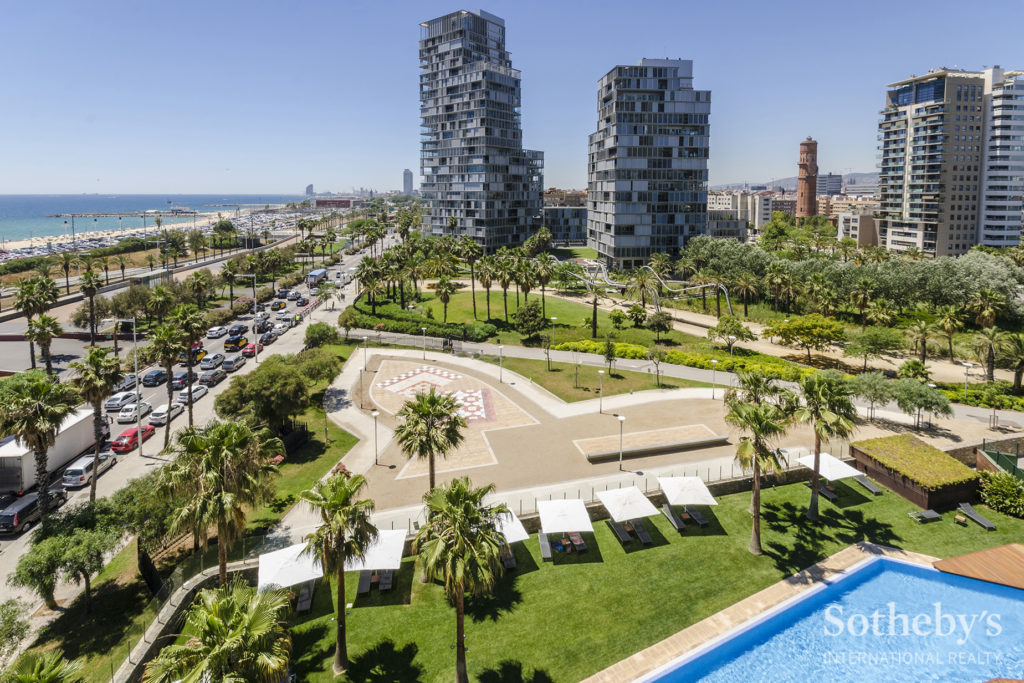
Despite the cheap square footage, Nou Barris is not a commonly recommended area for buying an apartment. However, against the backdrop of constantly rising property prices in other parts of the metropolis, many Barcelona residents are beginning to show interest in local housing as a possible alternative for profitable investments. Particularly in demand are properties in the sub-districts of Porta, La Prosperitat and Les Roquetes, at the other end of consumer demand is Ciudad Meridiana, considered the poorest metropolitan barrio.
Average cost per m²: 2500 €, two-room apartment – from 150 000 €.
Sant Andreu
Describing the best areas to live in, Sant Andreu, a former industrial area on the northern outskirts of Barcelona, is complete.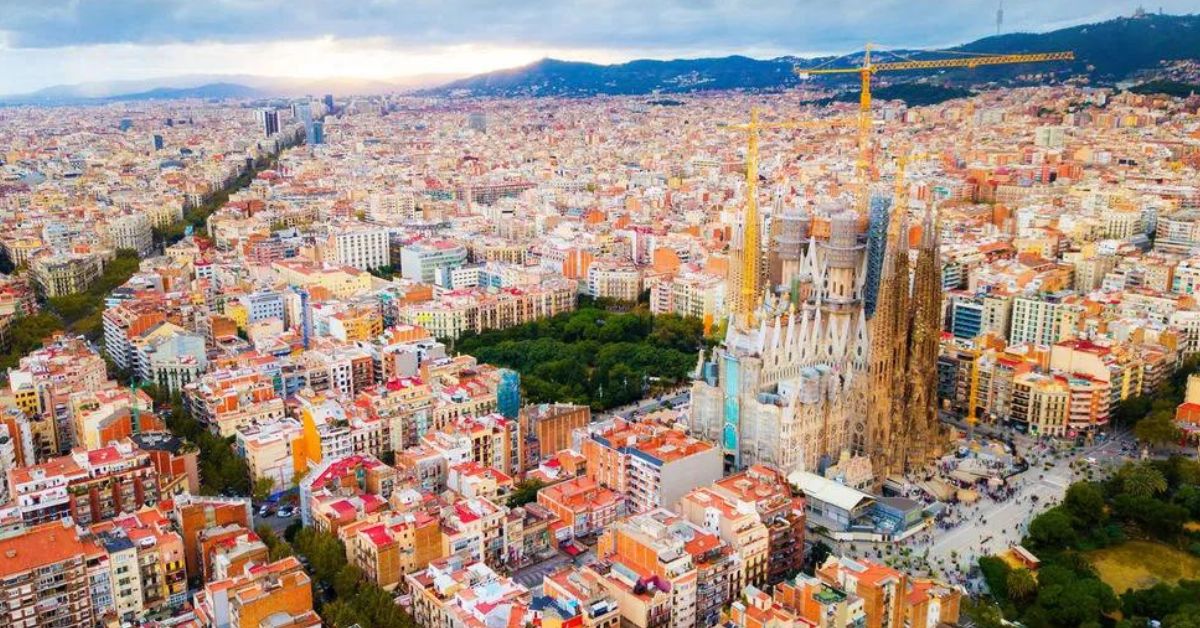
Real estate in Sant Andreu is not suitable for nightlife hunters or active shopping, but it will be the right choice for families with children, pensioners and lovers of silence. The conversion of old factories into art galleries and cultural centers and the opening of a number of trendy establishments is also attracting a bohemian and hipster crowd looking for affordable housing and new spaces for inspiration.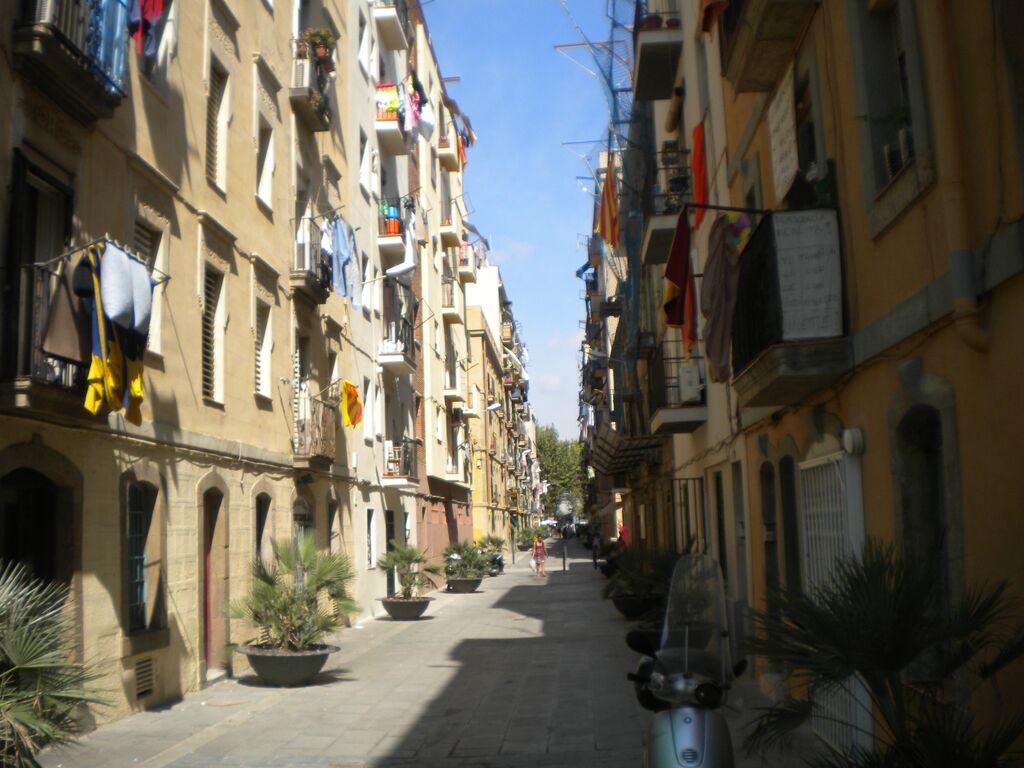
Average cost of M²: 3200€, two-room apartment – from 250,000€.
Sant Marti
Sant Marti, once an industrial area, is now the most fashionable place, popular with foreign professionals and creative youth. This part deserves the name “city of contrasts” more than others: futuristic skyscrapers here are adjacent to modest fishermen’s houses, and luxurious hotels and apartments are being built right in the buildings of old factories. The Diagonal business zone is also located here, where the headquarters of most international corporations and innovative start-ups, laboratories and research centers are concentrated. Symbols of the barrio are the famous Torre Agbar by French architect Jean Nouvel and the Rambla Poblenou, full of trendy restaurants, bars and art galleries.
Separately, it is worth highlighting Diagonal Mar – the only one of the seaside areas that is considered prestigious. This is a kind of futuristic city, consisting of high-rise ultra-modern residential complexes and luxury hotels.
San Martí is one of the few places in the city where large hotels and luxury residential complexes continue to be built with spacious, bright apartments, gyms and swimming pools. The cost of local real estate is above average, according to experts, will continue to grow in the future. The most expensive is housing in Diagonal Mar – a square meter is estimated at about 7,000 euros.
Average cost of M²: 5000€, two-room apartment – from 500,000€.
Where to live in Barcelona
In terms of prestige and status, the main concentration of the most luxurious objects falls on the “Upper zone” of the Catalan capital, that is, the Sarrià-Sant-Gervasi, Eixample and Les Corts areas, followed by Diagonal Mar in San Marti.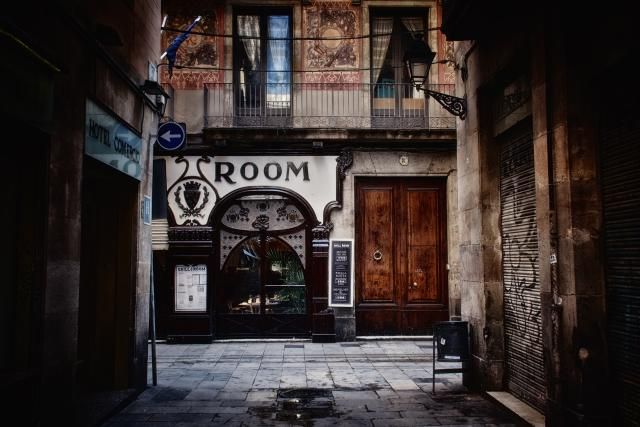
However, answering the question which areas of Barcelona are the best for living, it should be noted that “prestigious” is not always “expensive”. You can live comfortably in many parts of the city: the availability of parking lots and large chain supermarkets, parks, schools and kindergartens, transport links with the center and security can serve as a criterion. From this point of view, suitable places to live for couples with children will be neighborhoods remote from the center, with a large number of parks, developed infrastructure and relatively low housing prices, such as Horta, Gracia or Sants-Montjuic, and the young, not particularly picky the audience and students will be attracted by the always lively Eixample, Maternitat y San Ramon, Born and the Gothic Quarter.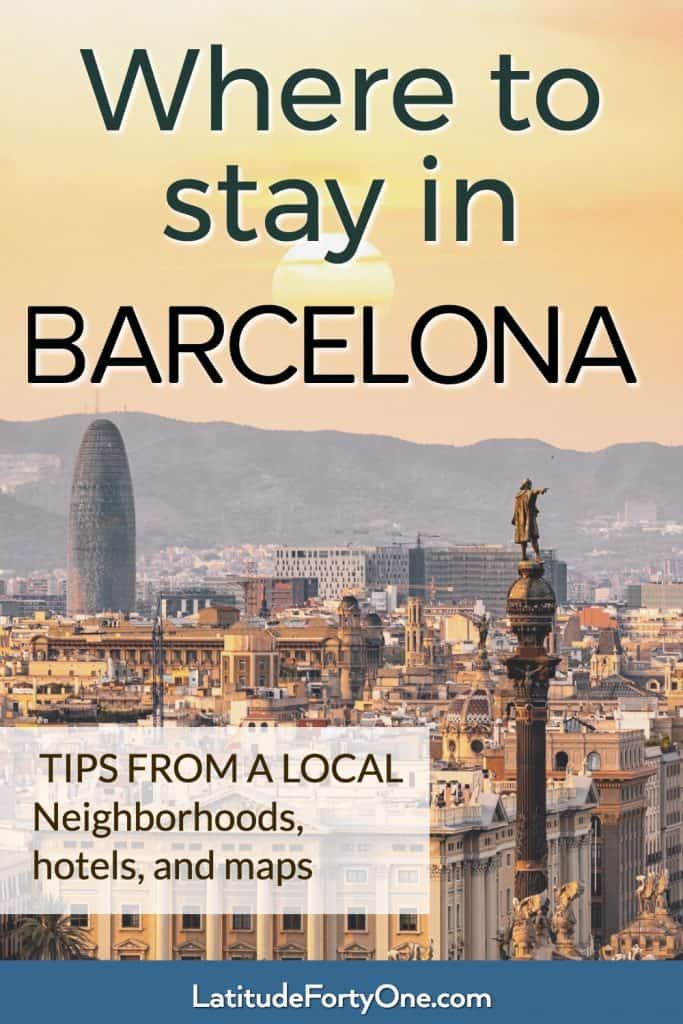
Unfavorable places
Like every capital city, there are good and bad areas in Barcelona. Disadvantaged areas are characterized by low rental rates, so they most often become the choice of unemployed emigrants from the hot South, who are not always doing legal business.
A striking example is the seaside La Mina, which is part of the district of Sant Adrian de Besos. This panel microdistrict, built for workers from Andalusia, gradually turned into a refuge for poor gypsy families and for a long time was considered the main “ghetto” of the capital of Catalonia. In recent years, the Generalitat has seriously taken up bringing the area to its proper form: unreliable residents are gradually being forced out to the periphery, new attractive complexes are being built, luxurious parks are being laid out, police raids are constantly carried out, however, it will take some time to restore the reputation of La Mina.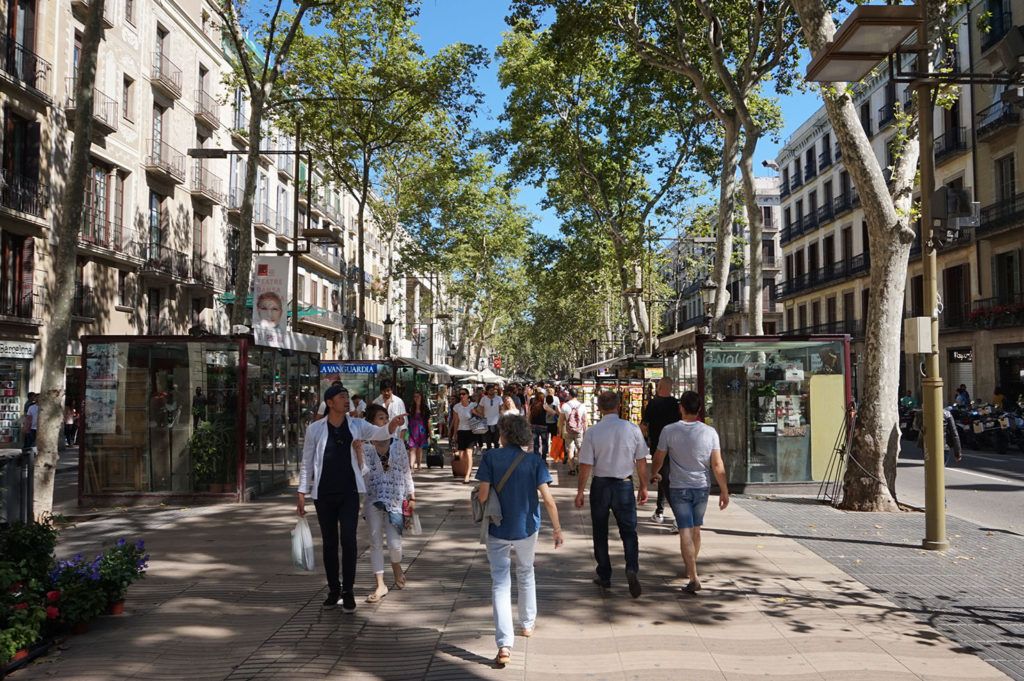
Raval is another hostage of notoriety. Located a step away from the main Barcelona street Las Ramblas, this barrio was traditionally populated by visitors from all over the world, which did not have the most positive impact on its criminal situation. For many years, the zone was a haven for a disadvantaged contingent. In the 80s, the mayor’s office actively took up bringing the Raval to its proper form, but despite this, foreigners still prefer to buy local inexpensive housing for rent, since it will never cease to be in demand among the ubiquitous tourists.
Beach Barceloneta is the oldest part of the city, where fishermen and sailor families traditionally settled. Its narrow picturesque streets descend to the sea and are simply bursting with all types of restaurants, bars and taverns, but, like many coastal areas, they attract not only enthusiastic tourists, but also crime. The housing stock is quite old and does not differ in large footage. However, the proximity of the beach, the sea view and the specific charm of the local streets are sufficient reason for ignoring minor troubles for many, so those who are looking for a house for temporary residence – for a period of study or vacation – are happy to choose Barceloneta.

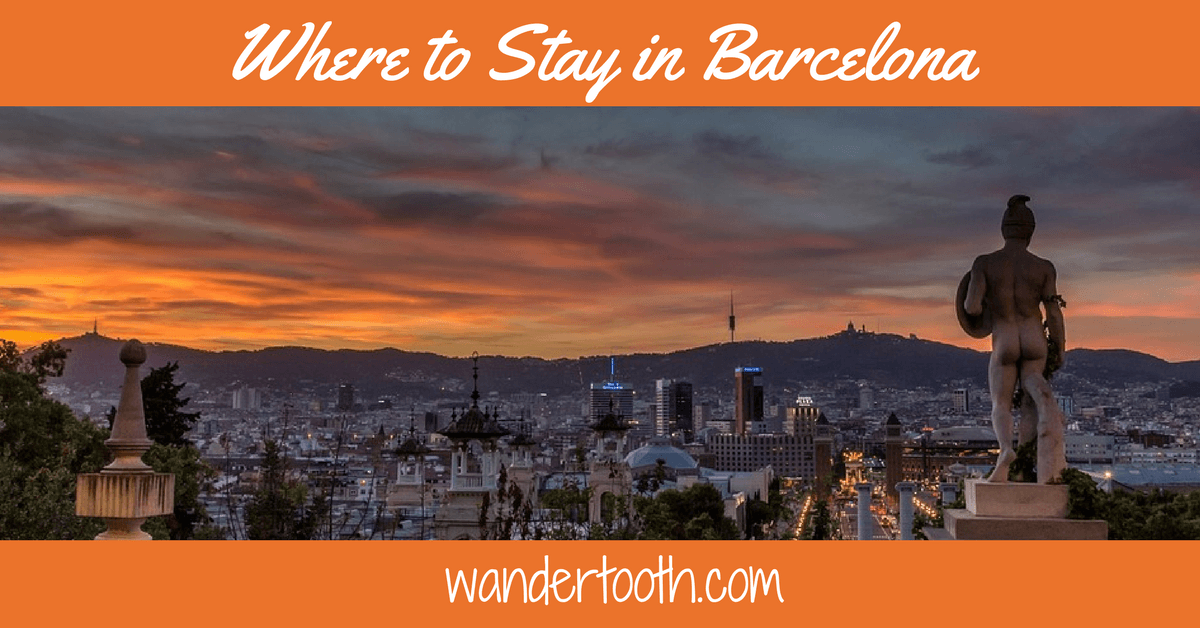
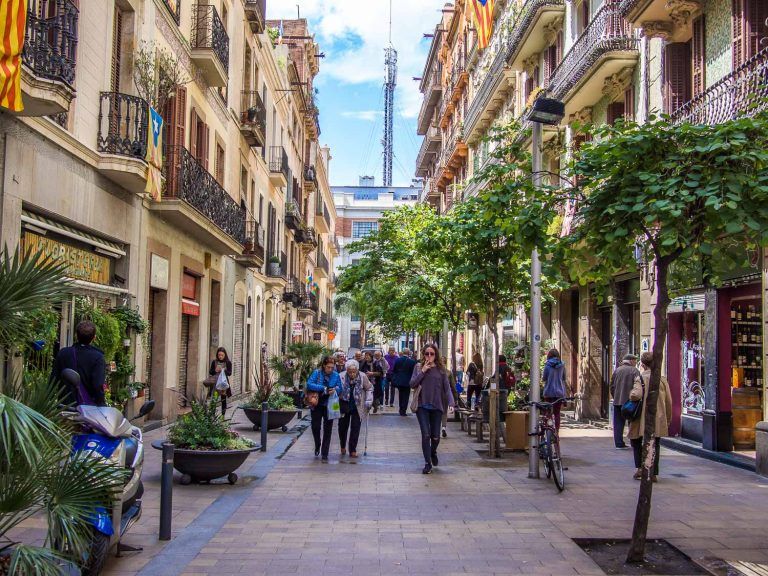 Up-and-coming former industrial neighborhood with chic living spaces.
Up-and-coming former industrial neighborhood with chic living spaces.